Community-Corporate Plan

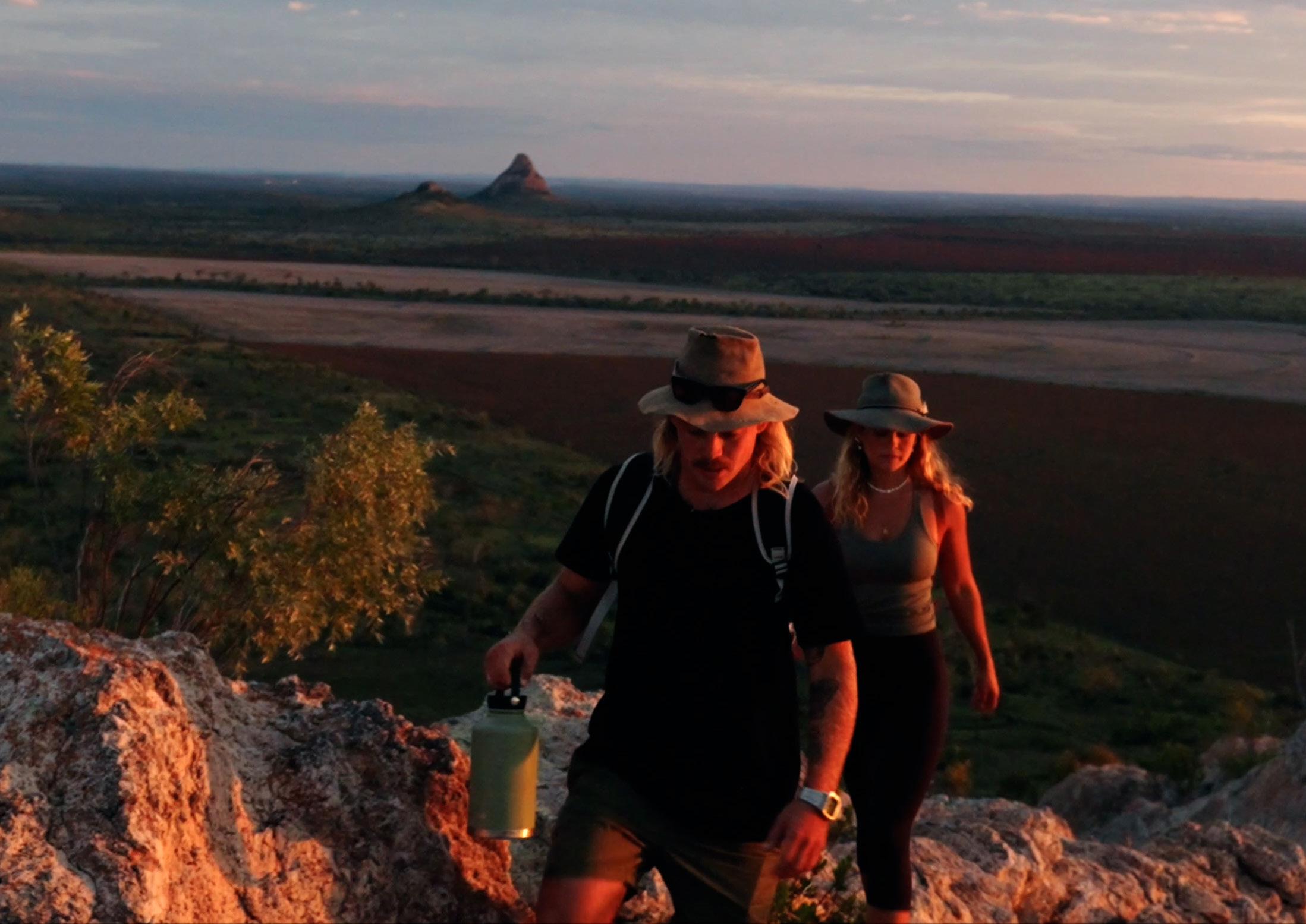
ISAAC_Community-CorporatePlan_Res No 8476_23AUGUST2023.indd 1 24/08/2023 3:32:59 PM
2023-2028
We acknowledge the Koinjmal, Widi, Birriah, Barada Kabalbara Yetimarala, Jangga, Barada Barna and Wirdi Peoples as the Traditional Custodians of the lands and waters throughout the Isaac region and their enduring cultural connection to country and community.
We pay our respect to the Elders past, present and emerging for they hold the stories, culture and traditions of Aboriginal and Torres Strait Islander Peoples. Our relationship with Traditional Custodians and First Peoples will shape a shared future that celebrates the history and culture of our First Peoples as the foundation of our region’s collective identity.

ISAAC_Community-CorporatePlan_Res No 8476_23AUGUST2023.indd 2 24/08/2023 3:33:01 PM
ACKNOWLEDGEMENT TO TRADITIONAL CUSTODIANS
We are committed to reconciliation and working in partnership with Traditional Custodians and First Peoples to shape a shared future for the benefit of all communities within our region and beyond.

Council’s First Nations Engagement Framework and the development of our first ‘Innovate’ Reconciliation Action Plan is underway.
These plans, in collaboration with our First Peoples communities, will foster a better understanding of their priorities for our shared future.
It will also aim to improve Council’s capacity to deliver positive outcomes for the communities of our First Peoples by acting as a foundation for respectful relationships, stronger partnerships, and meaningful opportunities.
We recognise that reconciliation is a journey and will require leadership to ensure our relationships and planning are culturally informed.
These documents demonstrate our commitment to reconciliation as well as our intent to integrate this ethos across our strategic planning documents and the delivery of our programs, projects, and services.
RECONCILIATION ISAAC_Community-CorporatePlan_Res No 8476_23AUGUST2023.indd 3 24/08/2023 3:33:02 PM
WE PLAN FOR A BETTER TOMORROW, TOGETHER
Thank you to everyone in our community who provided invaluable contributions to our Community-Corporate Plan engagement.
From the seven Traditional Custodian groups, to residents of our 17 unique communities, your passion for the future of our region was apparent. Our Isaac is a region with heart and that has never been more evident than it is now.

Your genuine contributions were considered, direct, heartfelt and inspiring. We thank you for trusting us to bring this vision to life and for working with us to strengthen the bonds of our community.
This 2023-2028 CommunityCorporate Plan reflects you.
It describes what you value, what you want to achieve and how you want to live in this region. Many are so very proud to call this region home, or a home away from home.
Most importantly, this document ensures that it is your voice that truly shapes our Isaac region for the next five years.
Electronic copies are available, free of charge, on Council’s website: www.isaac.qld.gov.au


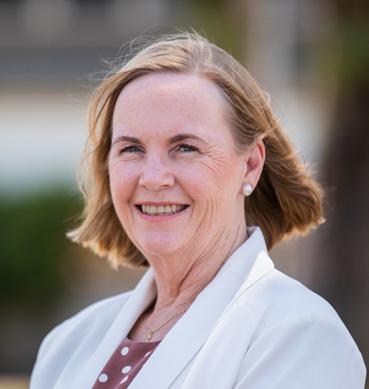


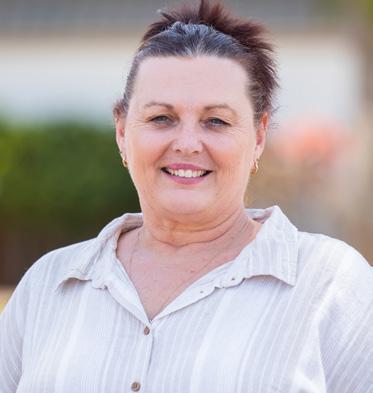

Copyright Isaac Regional Council 2023 Adopted by Council on Wednesday, 23 August 2023. Resolution #8476

4
YOUR ELECTED REPRESENTATIVES
Cr Greg Austen Glenden and Clermont Rural
Cr Sandy Moffat Dysart
Division 1 Division 2 Division 3
Cr Gina Lacey Moranbah
Division 5
Cr Kelly Vea Vea Deputy Mayor Moranbah
Division 6
Cr Carolyn Franzmann Clermont
Division 7
Cr Jane Pickels Middlemount
Division 4
Cr Simon West Moranbah
Division 8
Cr Viv Coleman Nebo and Coastal Communities
©
ISAAC_Community-CorporatePlan_Res No 8476_23AUGUST2023.indd 4 24/08/2023 3:33:09 PM
MAYOR ANNE BAKER
35

5 CONTENTS
Acknowledgement of Traditional Custodians
Reconciliation Statement
Foreword from the Mayor 4 Your Elected Representatives
We’re delivering in a changing world
Community-Corporate Plan
Our Strategic Planning Framework
Achieving our Plan
How Will We Measure Success?
Leading and enabling in a changing world
Engaged communities
Inclusive growth for a progressive economy
Liveability through design and infrastructure
Vibrant natural assets
Governance for accountability
How was this plan informed?
2
3
4
6
7
7
8
8
9
13
17
21
25
29
35
References ISAAC_Community-CorporatePlan_Res No 8476_23AUGUST2023.indd 5 24/08/2023 3:33:10 PM
DELIVERING IN A CHANGING WORLD
WE’RE
We are delivering in a changing world and how we plan our future matters. More than ever, local governments across Queensland are being stretched to operate outside of the traditional “roads, rates, and rubbish”. Our role as community leaders has permanently shifted. It requires us to dig beneath the surface, understand complex issues and develop innovative answers to not just local problems, but regional, national, and global trends and emerging pressures.
We’re constantly pursuing longterm sustainable futures for Isaac’s communities. To secure a prosperous future for all, we vow to help each of our communities navigate their own unique set of needs, challenges, and opportunities. At Isaac, the how matters and this is reflected in our organisation’s values. We aim to epitomise these values, and ensure they’re reflected in everything we do.
This document, Isaac’s Community-Corporate Plan is Council’s leading document to inform how we intend to lead, plan, and deliver community and Council priorities over the next five years and beyond.
OUR VISION
Helping to energise the world. A region that feeds, powers and builds communities, now and for the future.
OUR VALUES
COMMUNITY FOCUS
We engage and communicate authentically with all Isaac communities to understand both their common and specific needs. We will continuously improve how we address those needs to help future-proof our region.
OUR GOAL
To pursue long-term sustainable futures for Isaac’s communities.
TEAMWORK
We expect respectful relationships in our work together, to achieve.
We cultivate commitment through shared purpose, to create value.
CARING
We are committed to working safely and caring for the safety and wellbeing of our people and communities.
We believe that people matter.
POSITIVE WORK ETHIC
We do our best every day to have pride and enjoyment in our work. We display accountability, transparency, procedural consistency and integrity.
We seek the highest possible practical outcomes in everything we do.
We practice the knowledge that how we do things is just as important as what we do.

6
At Isaac, the how matters.
ISAAC_Community-CorporatePlan_Res No 8476_23AUGUST2023.indd 6 24/08/2023 3:33:11 PM
COMMUNITY-CORPORATE PLAN
The Community-Corporate Plan sets the long-term vision, medium-term goal and short-term priorities for our region, helping Council decide on operations and budgets.
The plan has been structured around six strategic themes: leading and enabling a changing world engaged communities inclusive growth for a progressive economy
liveability through design and infrastructure
vibrant natural assets governance for accountability

OUR STRATEGIC PLANNING FRAMEWORK
Community-Corporate Plan
Our five-year plan that informs all other plans.
Annual
Operating Plan and Budget, Strategies, Policies, Council Resolutions, other council programs
Action Plans
All actions and initiatives included in the operation and action plans, policies and decisions are linked to team and/or individual responsibilities for delivery.
All subordinate plans, policies, decisions and entities refer to, and are informed by the Corporate Plan.
Performance
Monitoring and Reporting
Periodic and annual performance reporting on the progress and implementation of operational and action plans is undertaken and reported back to Council and other committees.
7
ISAAC_Community-CorporatePlan_Res No 8476_23AUGUST2023.indd 7 24/08/2023 3:33:11 PM
ACHIEVING OUR PLAN
We undertake a range of roles and functions to support the needs and aspirations of our communities and achieve our Community-Corporate Plan.
Our communities and other stakeholders, such as government agencies, business partners, First Peoples, and community groups, also play a significant role in supporting, influencing, and achieving our plan.
We ask everyone to consider how they can have an impact and help influence a progressive future for Isaac.
Ways you can help are identified in each theme of this plan.
Deliver.
Plan, deliver and fund services and projects.
Facilitate.
Assist others to undertake activities by bringing interested parties together.
Partner.
Work with other stakeholders to achieve shared goals.
Educate.
Share learning to support broader understanding and action.
Advocate.
Promote the interest of the community to influence decision makers.
Regulate.
Regulate activities through law and legislation.
HOW WILL WE MEASURE OUR SUCCESS?
Annual Operational Plan
Each year, Council adopts an operational plan. It captures key deliverables in that year based on the Community-Corporate Plan’s goals and short-term priorities. The annual operational plan supports our annual budget process.
Annual Report
At the conclusion of each financial year, we produce a detailed annual report that reviews our performance and achievements. The annual report provides our community with concise operational and financial information about our performance against the priorities and service delivery commitments set out in the corporate and operational plans.
Quarterly Performance Report
Every three months, a quarterly performance report is prepared and presented to Council by the Chief Executive Officer. This report outlines performance and progress on priorities identified in the Community-Corporate Plan as well as organisational performance.
Council Reports
Over the life of the plan, additional progress reports may be submitted to Council detailing specific achievements against the Community-Corporate Plan.
Isaac Community Satisfaction Survey
We conduct the Isaac Community Satisfaction Survey every two years to gauge our community’s satisfaction with the services we are delivering. The information gathered from the survey helps us maintain or review priorities and service delivery commitments.
Other
There will be instances where Council will not have primary responsibility or control over delivery and outcomes. Instead, Council may have shared responsibility or may influence outcomes. These may be reflected within other reporting mechanisms.
8
ISAAC_Community-CorporatePlan_Res No 8476_23AUGUST2023.indd 8 24/08/2023 3:33:11 PM

ISAAC_Community-CorporatePlan_Res No 8476_23AUGUST2023.indd 9 24/08/2023 3:33:11 PM

ISAAC_Community-CorporatePlan_Res No 8476_23AUGUST2023.indd 10 24/08/2023 3:33:12 PM
LEADING AND ENABLING A CHANGING WORLD
We are living in times of increasingly complex and rapid change driven by technological advances, geo-political and demographic shifts, and a changing climate.
11
ISAAC_Community-CorporatePlan_Res No 8476_23AUGUST2023.indd 11 24/08/2023 3:33:12 PM
LEADING AND ENABLING A CHANGING WORLD
WHAT WE KNOW
We are living in times of increasingly complex and rapid change driven by technological advances, geo-political and demographic shifts, and a changing climate.
Our leadership here and now matters - it will directly influence how well we, as a region, harness opportunity; proactively respond to change and adversity; and foster social adaptive capacity. Responding to change can be complex and demands considered and responsive research, policy, planning, engagement, and decision-making.
We have listened to our communities and key stakeholders to understand the impact these trends will have and the changes they want to see locally.
While we’re acting in the here and now, we can’t lose sight of the big picture or of the many external factors having a direct impact on our region. Our global physical footprint is small, but our region’s global impact is big, as we continue to feed, power, and build communities.
We know we need to be wellinformed and progressive in our thinking so we can respond swiftly and effectively. And, when the going gets tough, we fight hard to make sure we are in the right place, speaking to the right people, at the right time.
We need to ensure we facilitate the organisation’s adaptive capacity across all aspects of its business, maximise the resilience of our services and functions, so we can continue to deliver for and on behalf of our communities.
Our people are our power.
Our connections to our First Peoples, our communities, our employees, industry, and all levels of government are our foundation for strategic, strong, and respectful relationships capable of generating meaningful change.

We know that we’re only as good as the people we employ. We will continue to prioritise the capability of Council, its people and technology, to simultaneously support healthy, agile, and flexible workplaces, improved efficiency, and productivity requirements.
First Peoples relationships
Genuine community engagement
Submissions to government and industry
Future-proofing strategies
Advocacy Representatives on committees
Funding submissions and funding received
Climate change mitigation
Professional development
Technological advancement
Social infrastructure policy
Workplace flexibility and responsiveness
Social adaptive capacity refers to the conditions which enable people to anticipate and respond to change.
12
ISAAC_Community-CorporatePlan_Res No 8476_23AUGUST2023.indd 12 24/08/2023 3:33:15 PM
LEADING AND ENABLING A CHANGING WORLD
EMERGING TRENDS, CHALLENGES AND OPPORTUNITIES
Our region is not like any other, and with this comes challenges that need to be considered and worked through for the betterment of our people and communities.
External challenges such as climate change, decarbonisation, economic transformation, technological advancements, and workplace trends, are likely to affect our region differently to others.
One size does not fit all, and we need to use our knowledge of our communities and these emerging trends to inform how we lead our communities amongst change.
A changing climate means greater climate variability and potentially dire consequences for our region, our communities, and our people.
Our coastal strip is vulnerable to rising sea levels, more acidic oceans, and intense tropical cyclones. The devastation of cyclone Debbie in 2017 is still fresh in many residents’ minds and it’s important to continue to build our communities’ resilience. Similarly, higher temperatures, hotter and more frequent hot days, more intense downpours, and severe
flooding like that experienced in 2010 and 2011, are likely to impact our communities again and cause significant economic disruption.
Mounting costs from disaster clean ups, greater demand for services and prematurely deteriorating assets will become growing liabilities for Council.

The cost of natural disasters to Australia in 2017 was $13.2 billion and this is projected to reach $39.3 billion per year by 2050. Climate-related risks and adaptation requirements need to be embedded into our strategies, policies, procedures and decisionmaking where necessary, to minimise impacts to our people, ratepayers, and budget.
Many of our inland communities have built up dependencies around (mostly) metallurgical and thermal coal mining operations. While the resource industry aims to directly reduce its operational emissions and improve its global competitiveness, it will also be critical in supplying the minerals, metals and equipment needed to decarbonise the global economy and meet emissions targets.
Many mines in the region are coming to their natural (resource exhaustion) and/or economic end of life and this means impacts to local jobs, populations, and businesses. As a region with 75% of current jobs in Isaac highly exposed to decarbonisation, planning for the decline of fossil fuels and pursuing economic opportunities associated with decarbonisation will be vital.
Change will be forced upon local governments. We cannot solve this alone and will need community, industry, and all levels of government to help with the heavy lifting to ensure a prosperous future for all.
The Competition for Talent
Competition for talent is real across all sectors, and only more challenging in these disruptive times. For Isaac, this is exacerbated by the already low unemployment rates and competitive and highly remunerative resources industries on our doorstep. Council needs to find a balance between the benefits of remote flexible, mobile-enabled working arrangements with delivering face-to-face services at a bricks and mortar level.
13
ISAAC_Community-CorporatePlan_Res No 8476_23AUGUST2023.indd 13 24/08/2023 3:33:15 PM
LEADING AND ENABLING A CHANGING WORLD
OUR 20-YEAR VISION
We consistently transform challenges into opportunities, to deliver balanced outcomes on behalf of our communities, in a rapidly changing world.
OUR 1-5-YEAR PRIORITIES
1 We will continue to create and build-upon strong and respectful relationships with our communities, all levels of government and industry.
2 We will build a collaborative, consultative and mutually beneficial process for engaging with our First Peoples and to support outcomes.
3 We will continue to nurture our First Peoples connections to ensure our planning and decision-making is culturally informed.
6 We will continue to fight for an equitable share of infrastructure, services, and resources investment in our region.
7 We will embed climate-related risks, uncertainties and adaptation requirements into our strategies, policies, procedures, and decisionmaking.
8 We will continue to develop the capability of Council, its people and technology, so it is responsive to the changing nature of work and ongoing needs of the community.
OUR 5–10-YEAR GOAL
Through meaningful community engagement, strategic relationships, and impactful advocacy, we will enable our communities to harness opportunity, and lead boldly amongst change and adversity.
4 We will actively monitor, plan and advocate for the progressive futures of our communities.
5 We will focus on presenting compelling propositions to all tiers of government and the services sector, to prioritise investment in our region that fulfills the needs of our communities.
9 We will continue to support responsive, agile, and flexible work practices that meet our productivity requirements.
WHAT YOU CAN DO TO HELP
Join ‘Speak Up Isaac’ to have your say on projects and events that are happening in our region.
Discover more about the culture of our region’s First Peoples by participating in Reconciliation Week and NAIDOC Week celebrations.

14
ISAAC_Community-CorporatePlan_Res No 8476_23AUGUST2023.indd 14 24/08/2023 3:33:19 PM
OUR FOCUS FOR THE NEXT FIVE YEARS
Supporting strategies
First Nations Engagement Framework
Reconciliation Action Plan
Glenden Futures Steering Committee and Work Plan
Social Sustainability Policy Framework
Climate Change Policy Framework

Supporting Council Services
Office of the CEO
Advocacy and External Affairs
People and Capability
Media and communication
SOCIAL SUSTAINABILITY POLICY
Council’s Role: Deliver. Facilitate. Partner. Educate.
To keep pace with the changing world around us, our communities need to adapt and grow in a manner that harnesses their full potential to thrive on the back of major project and infrastructure investment.
Council is also beholden to itself to ensure the broadest view is taken on community interests and wellbeing for now and into the future in decision making on infrastructure and service delivery.
In light of this, Council’s adopted Social Sustainability Policy outlines its aspirations for an Isaac region which:
• Recognises community needs for infrastructure and services through normative, felt, expressed and comparative lenses.
• Encourages strategic thinking and advocacy to recognises the seven dimensions of social sustainability as an integrated whole, and ensures social sustainability is not isolated from conversations about economic growth.
• Sees net benefits returned to communities during major project investment, development, delivery and endof-life processes.
Processes to be enacted for implementation of this policy include:
• Embedded council resources for assessment of major projects, with clear guidelines and procedures to outline how Council will engage in the major project assessment process.
• Development of a social infrastructure investment prospectus to guide conversations with major project proponents on sustainable social investment in parallel with their project lifecycle.
• Improvements in Council reporting and evaluation processes to directly consider the social impacts and benefits of projects and changes to service delivery.
15 CATALYST PROJECT
ISAAC_Community-CorporatePlan_Res No 8476_23AUGUST2023.indd 15 24/08/2023 3:33:20 PM
A STABLE FUTURE FOR GLENDEN
Council’s Role: Deliver. Facilitate. Partner. Educate.
Glenden, and all Queensland communities have a right to a future. Isaac Regional Council has been fighting for Glenden’s future for over a decade.
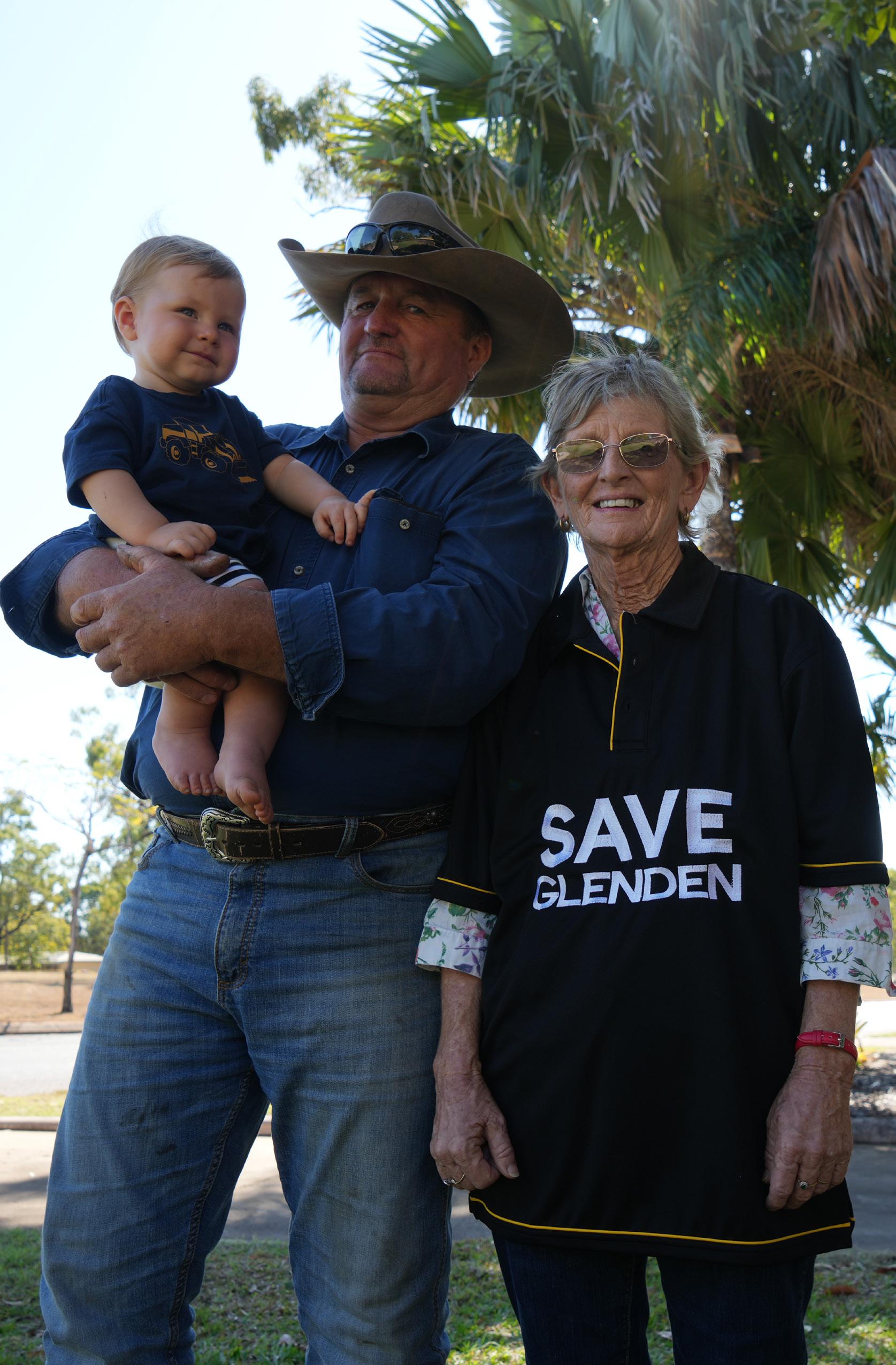
It has invested significant time and money defending the community since 2019 in court, to ensure QCoal honours its original commitment to house its workforce within the boundaries of the Glenden township.
In June 2023, the Queensland Resources Minister announced his preliminary decision to approve a 450-bed mining camp at the Byerwen coal mining lease.
This preliminary decision goes against the Queensland Resource Industry Development Plan,
The Queensland Energy and Jobs Plan, the Environmental Impact Statement process, the Social Impact Assessments and the principles of the Strong and Sustainable Communities Act
Council wants to ensure this doesn’t set a new precedent for mining and renewable communities and ensure that legislation, engagement and plans are upheld with the intent for which they were developed. Council won’t give up its fight for Glenden.
16 CATALYST PROJECT
ISAAC_Community-CorporatePlan_Res No 8476_23AUGUST2023.indd 16 24/08/2023 3:33:22 PM
ENGAGED COMMUNITIES
Our relationships and the connections we make with one another, form the social fabric of our communities; making us all a part of the common thread that is Isaac.
17
ISAAC_Community-CorporatePlan_Res No 8476_23AUGUST2023.indd 17 24/08/2023 3:33:23 PM
WHAT WE KNOW
Our relationships and the connections we make with one another, form the social fabric of our communities; making us all a part of the common thread that is Isaac.
We know we can’t deliver on our vision for the region without a genuine relationship with the communities we serve. We want our communities to feel heard and respected; their needs and desires well understood and reflected in Council’s activities. We know we have to work hard to achieve this and we will continue to drive improvements to our community engagement practices. Regardless of your age, gender, culture; whether you live here fulltime or part-time for work; we want you to feel welcome, safe, included and connected to each other, our communities, and the broader region. Our neighbourhood and Council assets are foundations for connection and inclusion.
We want to encourage greater activation of our public places and spaces through innovation, events, and other participatory activities.
We are committed to maintaining what has been built and to improving our spaces, so they are inclusive, fit for purpose, accessible and adaptable.
We know your liveability and community bonds rest on your access to well-resourced social systems, services, and infrastructure. They bring our people and communities together to interact, play, learn, and celebrate.
We will continue to advocate for the affordable provision of these systems and services including housing, childcare, allied health, and healthcare within the region so we can ensure you are living well and are cared for.

We will work to engage and empower young people, to advocate on youth-related matters and implement youthled initiatives that support and celebrate young people in our region.
We will continue to encourage healthy and active lifestyles in our region, including the delivery of mental health and wellbeing initiatives.
18 ENGAGED COMMUNITIES
1
99
47,500
Isaac Community
Program
over $400k annually We maintain 19
civic and recreation centres Sport -based groups and organisations Community groups and organisations
17 distinct communities 122 community tenure agreements 7 Traditional Custodian groups 7 Council Customer Service Offices
regional art gallery and 2 museums
parks and playgrounds 8 community libraries and
annual users
Grants
distributes
community facilities including halls,
8
60
We own and operate
aquatic facilities (which is more than significantly larger councils) 8 State Emergency Service depots
volunteers We support and host about 240 events annually
ISAAC_Community-CorporatePlan_Res No 8476_23AUGUST2023.indd 18 24/08/2023 3:33:24 PM
Despite our region being young by national standards, our population is aging.
The proportion of Australians aged 65 years or over is expected to increase from 16% to 23% by 2060-61.
The number of working-age people to non-working-age people is predicted to decline over the next 40 years and represents a shift in how we plan for our communities’ futures.
EMERGING TRENDS, CHALLENGES AND OPPORTUNITIES ENGAGED COMMUNITIES
Similarly, the burden of physical and mental health is rising across the globe.
Most Australian adults do not meet the recommended guidelines for exercise or healthy eating and are overweight or obese.
Social connection is a key protective factor that can promote more positive wellbeing outcomes during periods of uncertainty and distress.

In recent years, the share of Australians who hold private health insurance for hospital treatment dropped in 2020.
This trend could pose future risks to the viability of the private health system and place additional strain on the public healthcare resources which pose an additional risk to our region’s already stressed health services.
COVID-19 has fast-tracked digital health initiatives into routine healthcare management and delivery.
Telehealth services can reduce travel time and productivity losses and improve the timeliness of care however telehealth can also lead to overutilisation of services and, widen health care disparities in populations with limited digital access. It may not reduce health care costs under current activitybased funding models.
The benefits of telehealth and other digital health initiatives need to be managed with the potential challenges to support a sustainable future healthcare system.
While we support and welcome an array of telehealth options for our region, a nuanced solution needs to be sought for the benefit of all our residents.
Telehealth is not a substitute for bricks and mortar health infrastructure and services.
The Great Australian Dream
Housing affordability continues to be a regional issue. The median cost of housing is also growing faster than household incomes.
It is becoming increasingly challenging for younger Australians to break into the property market.
By 2041, the Australian Housing and Urban Research Institute estimates that 52.5% of Australians aged 25–54 years old will own a home, compared with 60% in 2016.
We want people to make Isaac their home and maintaining a diverse range of affordable housing options will continue to be crucial determining factor for this.
19
ISAAC_Community-CorporatePlan_Res No 8476_23AUGUST2023.indd 19 24/08/2023 3:33:24 PM
OUR 20-YEAR VISION
Our communities are connected, diverse and thriving places. Our people are engaged, included, and celebrated. Our services and facilities are valued and enhance healthy and vibrant lifestyles.
1-5-YEAR PRIORITIES
1 We will advocate for the provision of essential services including housing, childcare, mental health, allied health, disability, aged care, and healthcare within the region.
6 We will embed effective and genuine community consultation processes across the organisation to enable participation, engagement, and collaboration.
2 We will support our communities to improve their resilience and social adaptive capacity, so that in times of adversity our people and places are responsive, connected, cared for and safe.
3 We will continue to improve our neighbourhoods and community assets, so they are inclusive, fit-forpurpose, accessible, and adaptable.
OUR 5–10-YEAR GOAL
We are committed to creating socially adaptive, connected, and diverse communities whose public spaces are valued and activated; whose lifestyles and wellbeing are prioritised; and whose individual and collective identities are celebrated.

4 We will encourage a diversity of community events and arts programs to innovatively use our places and spaces.
5 We will encourage our communities to embrace opportunities for participation in events, arts and creative experiences which celebrate our stories, cultures, and identities.
7 We will maintain and activate quality sport, recreation, and community facilities to support an active and healthy community.
8 We will encourage young people to have a say about the issues that affect them and they are empowered to make a meaningful contribution to decision-making and future-planning in their community.
9 We will continue to investigate and facilitate options for our senior and disabled population to live independently, or with support, in their community for longer.
WHAT YOU CAN DO TO HELP
Join your local library - its FREE!
Be prepared to respond to events like bushfires, floods, and cyclones by having your own safety plan and subscribe to the Isaac Disaster Dashboard for notifications and updates. Better yet, join your local State Emergency Services (SES).
Participate and support local networks, activities, events and festivals.
Volunteer with your local community groups and sporting clubs.
Help create a sense of community in your town by being friendly, checking in with neighbours and offering to help before, during or after a severe weather event.
20
ENGAGED COMMUNITIES
ISAAC_Community-CorporatePlan_Res No 8476_23AUGUST2023.indd 20 24/08/2023 3:33:24 PM
OUR FOCUS FOR THE NEXT FIVE YEARS
Supporting strategies
Recreation and Open Space Strategy
Community Engagement Framework
Arts and Cultural Action Plan
Community Recovery Plans

Community Grants Program including RADF
Supporting Council Services
Arts and culture, museums and galleries
Libraries and digital programs
Community facilities, leasing and activation
Community engagement, programs, relations and events
Sports and recreation development
Disaster resilience and management
Youth services
ADVOCATING FOR BETTER HEALTH SERVICES AND INFRASTRUCTURE
Council’s Role: Advocate.
The current provision of health services and infrastructure in the Isaac region does not meet our communities’ needs.
From medical and allied health services to, mental health, aged care and disability support, under-staffing, under-funding and aging infrastructure poses an unacceptable risk to our people and communities.
The health and wellbeing of our people is paramount, and while health is not considered a local government responsibility, we will continue to advocate for equitable access to reliable health services and infrastructure in our region.
Council has a long-held health advocacy position and supports community-led health and wellbeing initiatives.
Two significant regional health projects include the Clermont Seniors Living Project and new Moranbah Hospital.
The Clermont Senior’s Living Project is being driven by the Belyando Enterprise Network Inc to ensure aging residents can enjoy their twilight years at Monash Lodge – a valuable aged care facility in Clermont. The facility was founded through generous donations and contributions by the community and are now seeking funding to refurbish the existing 20-bed facility, create 12 new independent living units and a caretaker’s apartment. The project’s social innovation model applies pioneering thinking to one of Australia’s biggest issues and could help address aged care across other small rural and regional communities.
After years of local advocacy, the Moranbah Hospital will finally be replaced. The project is scheduled for completion by June 2025. The $48.5 million upgrade will increase the number of emergency department treatment spaces and provide enhanced outpatient, allied health, community health and mental health spaces. The facility will also include improved medical imaging services and a helipad to reduce reliance on ambulance services.
21
CATALYST PROJECT
ISAAC_Community-CorporatePlan_Res No 8476_23AUGUST2023.indd 21 24/08/2023 3:33:25 PM
MORANBAH COMMUNITY CENTRE REVITALISATION PROJECT
Council’s Role: Deliver.
In 2021, Council received $8 million in funding from the Resources Community Infrastructure Fund to revitalise the Moranbah Community Centre.
The facility is now approaching 50 years of age, so the funds will be directed towards technological upgrades to ensure connectivity needs are met for industry and community users into the future as well as mechanical services improvements including the air-conditioning system.
The upgrade will ensure the centre can better fulfil its role as Moranbah’s only contemporary multi-functional community space, supporting the needs of the community, mining industry and local businesses into the future.
The centre has been a centrepiece in the Isaac region since 1974.
Since 2018, the centre has hosted or catered 685 events, meetings and civic ceremonies making it the most used community centre in the Isaac region and generating more than $640,000.

This project will deliver a modern functional event centre that allows the region to play host to a variety of events that were previously unable to hosted in region.
The overall total of the centre redevelopment is in excess of $10 million with Isaac Regional Council co-funding the project.
22 CATALYST PROJECT
ISAAC_Community-CorporatePlan_Res No 8476_23AUGUST2023.indd 22 24/08/2023 3:33:25 PM
INCLUSIVE GROWTH FOR A PROGRESSIVE ECONOMY
Our region has long-been a powerhouse regional Queensland economy, batting well above its weight with regards to its Gross Regional Product (GRP), and outputs.
23
ISAAC_Community-CorporatePlan_Res No 8476_23AUGUST2023.indd 23 24/08/2023 3:33:25 PM
GROWTH FOR A PROGRESSIVE ECONOMY
WHAT WE KNOW
Our region has long-been a powerhouse regional Queensland economy, batting well above its weight with regards to its Gross Regional Product (GRP), and outputs.
Our per-capita GRP is four times the Queensland average, while our per worker GRP is 1.8 times the Queensland average.
Our communities were built on the back of the mining industry, the extraction of fossil fuels, and exceptional agricultural and grazing capabilities.
In fact, our region simultaneously hosts the second-largest beef population and the largest metallurgical reserves in Queensland.
Our region is also witnessing a burgeoning tourism sector and significant investment in largescale renewable projects.
Each of these has helped define our local and regional economic identity and will continue to do so into the future.
Our metallurgical coal is world class and is being used to produce steel internationally.
We know steel is essential in the decarbonisation of the global economy and the rise of renewable
world. Many of our communities have significant dependencies on mining operations who are reaching resource exhaustion or economic end-of-life. We’ve witnessed the rapid prosperity and decline of regional Queensland before, and the impacts of both are devastating.
Growth in the Isaac context is not always good. This is why we’re focusing on inclusive growth – economic development underpinned by best-practice ESG principles to build long-term social sustainability.
technologies; particularly through the production of wind turbines and utility-sized solar panels. But this does not make our region and our communities’ economic futures immune. We live in an increasingly complex and rapidly changing
We have a lot of work to do to ensure our region maximises the opportunities presented throughout this transformative process and ensure that while we’re feeding, powering, and building others’ communities, we’re nurturing ours too. We know that local business remains the backbone of the region’s economy and its ability to expand and adapt will be a driver of success. In-region education, training and skills development will also be critical to facilitate vocational opportunity for our community to thrive in current
24
INCLUSIVE
$32.2 billion in regional output in 2022 2 wind projects approved $18 billion of GRP generated in 2022 24,888 local jobs 1,990 registered local businesses Second largest beef population in Queensland 578,000 domestic overnight visitors Up to 5 coal mines anticipated to close in the next 5-10 years* 10 solar projects approved 26 operating coal mines; 2 under construction; 4 under expansion Education and training Investment and opportunity * subject to ecnomics and endof-life resources ISAAC_Community-CorporatePlan_Res No 8476_23AUGUST2023.indd 24 24/08/2023 3:33:26 PM
and future employment.
EMERGING TRENDS, CHALLENGES AND OPPORTUNITIES
INCLUSIVE GROWTH FOR A PROGRESSIVE ECONOMY
The 2022 Queensland Energy and Jobs Plan confirms the State’s intent to move away from fossilfuel power generation.
Renewable energy sources are expected to account for 80% of the growth in global electricity demand by 2030, surpassing coal as the primary source by 2025.
The Australian Energy Market Operator is preparing Australia’s grids to manage 100% renewable energy by 2025, however Queensland is aiming towards a 50% renewable target by 2030.
With the highest wind and solar capacity per capita across developed nations, Australia, and the Isaac region, has a natural advantage in renewable energy generation, and the development and deployment of low-emission technologies.
This transition opens new industry and job creation opportunities.
Australia’s abundant access to raw commodities and renewable energy, advanced manufacturing capabilities and concentration of relevant skilled workers, yield a
strong competitive advantage in emerging clean energy industries.
This is particularly so for the Isaac region. Trends suggest the demand for steel, zinc, copper, aluminium, rare earth elements, lithium, uranium and nickel will continue to grow.
Future innovations will likely focus on improving the precision of exploration and extractive technologies, and the sustainability of mining operations.
The recent COVID-19 pandemic revealed Australia’s vulnerability to global supply chain disruptions.
In February 2022, 37% of Australian businesses experienced supply chain disruptions, half of which were unable to find alternative suppliers. Supplier diversification, onshoring and contingent contracting have been proposed as potential risk mitigation strategies for firms and governments.
The future of coal
As the Queensland Government moves away from its reliance on coal-fired energy generation,
the future of metallurgical (steelmaking) coal remains bright.

There will be continued demand for steel to keep up with the construction required to support population growth.
There are over 8 billion people in the world, 50% of which live in urban areas.
By 2050, it is anticipated the world’s population will grow to 10 billion people with approximately 70% of people residing in urban area many of whom will have emerged into the middle classes.
To effectively house this population boom, a new New York City will need to be built every month for the next 40 years.
While “green” steel is proving promising, the commerciality of production and associated economics are not yet competitive with traditional steelmaking.
Even though this means our region is still well-placed to feed demand for steel, it needs to be ready for when green steel reaches maturity.
25
ISAAC_Community-CorporatePlan_Res No 8476_23AUGUST2023.indd 25 24/08/2023 3:33:27 PM
OUR 20-YEAR VISION
Our region is recognised nationally as the conscientious engine-room of regional Queensland for resources, agriculture, and renewables.
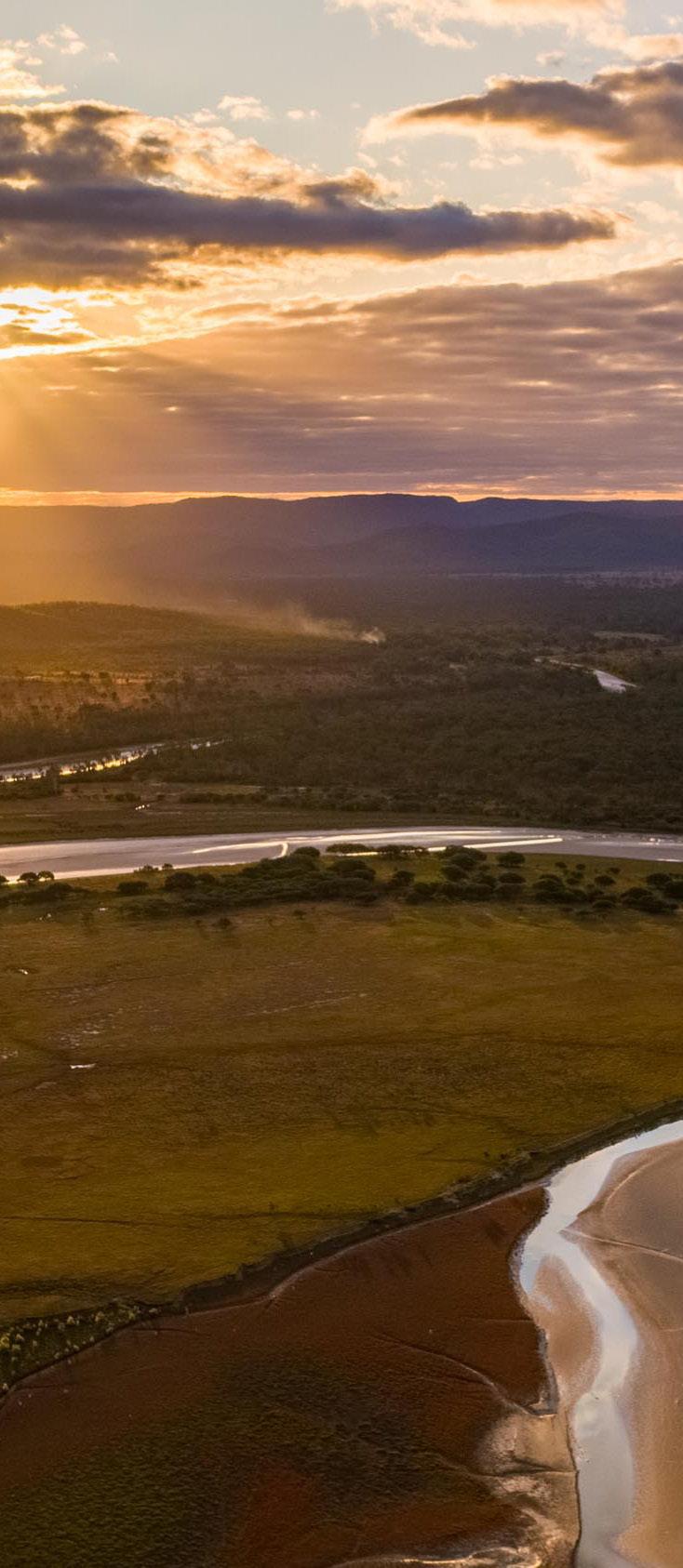
1-5-YEAR PRIORITIES
1 We will define, strengthen, and drive a national competitive economic identity.
2 We will enhance the profile of local industry ideas, solutions, and achievements.
3 We will continue to advocate, promote, and harness opportunities for existing, new, and emerging industries to drive jobs, innovation and participation in the circular economy.
4 We will actively plan for inclusive growth which collectively prioritises and benefits the needs of the community, business, and industry.
Inclusive growth is a specific term used to describe development and progress that support social sustainability.
This is not growth for growth’s sake, nor about solely improving economic performance.
Inclusive growth benefits all and builds upon the social fabric of our communities.
WHAT YOU CAN DO TO HELP
OUR 5–10-YEAR GOAL
We have a responsive local economy that responsibly and innovatively feeds, powers and builds communities.
5 We will provide local and regional policy and program settings to facilitate inclusive growth and long-term community resilience.
6 We will work with business leaders and industry experts to build the capability, reach and performance of our small to medium-sized enterprises (SMEs) and to retain and grow local talent.
7 We will encourage the adoption of leaner and greener business practices across the region.
8 We will encourage and promote increased consumer and business expenditure within the economy by locals, visitors, and businesses.
9 We will facilitate the growth of in-region educational and vocational training opportunities to support current and emerging industries.
10 We will explore opportunities to encourage, attract and nurture new business in the region.
Shop Isaac - Buy locally wherever possible and shout out an Isaac business.
Plan a stay-cation. Discover the hidden treasures and create adventures available within our region.
If you are a business, procure locally, celebrate your successes publicly and showcase your excellent employees and their capabilities to raise the profile of your business and industry in Isaac.
Invest locally, create and support local supply chains and employ local residents.
INCLUSIVE
GROWTH FOR A PROGRESSIVE ECONOMY
26 ISAAC_Community-CorporatePlan_Res No 8476_23AUGUST2023.indd 26 24/08/2023 3:33:27 PM
OUR FOCUS FOR THE NEXT FIVE YEARS
Supporting strategies
Economic Development Framework
Business Support Strategy
Tourism Development Strategy
Investment Attraction Framework
Isaac Tourism Trails Strategic Plan
Recreational Prospecting and Fossicking Strategy
GW3 Diversify the Regional Economy
GW3 Workforces for the Future
Shop Isaac
Supporting Council Services
Economic and Tourism Development
Economic and Business Resilience
ISAAC RESOURCE EXCELLENCE HUB
Council’s Role: Facilitate. Advocate. Partner.
The Isaac Resources Excellence Hub will explore and create new industry opportunities that arise out of the global transformational change facing resource communities.
The hub will unlock innovation, training and access to technology to support research into mining rehabilitation and decarbonisation while also offering opportunities for our agricultural sector.
A key component of the project will be to prepare workers for jobs of the future right here at the coal face, and act as a regional hub for education and re-skilling opportunities.
Council has committed an 8.5ha high-exposure site on the Moranbah Access Road near the

entrance of Moranbah, the heart of the Bowen Basin and gateway to the Galliee Basin.
This is our capital contribution to bring this project to life. Council has also committed a reasonable project planning budget to ensure the necessary initial integrated planning to support the project.
Additional elements of the proposed hub include:
• An in-mining-region collaborative hub-and-spoke extension of the Mackay Resources Centre of Excellence.
• A Country Universities Centre or tertiary education model.
• A node in the Cooperative Research Centre community including CRC TiME, CRC Northern Australia and possibly CRC EPIC.
• A mining visitors’ interpretive and cultural heritage centre.
• Complementary industry, regulatory and community facilities and activities.
CATALYST PROJECT
27 ISAAC_Community-CorporatePlan_Res No 8476_23AUGUST2023.indd 27 24/08/2023 3:33:27 PM
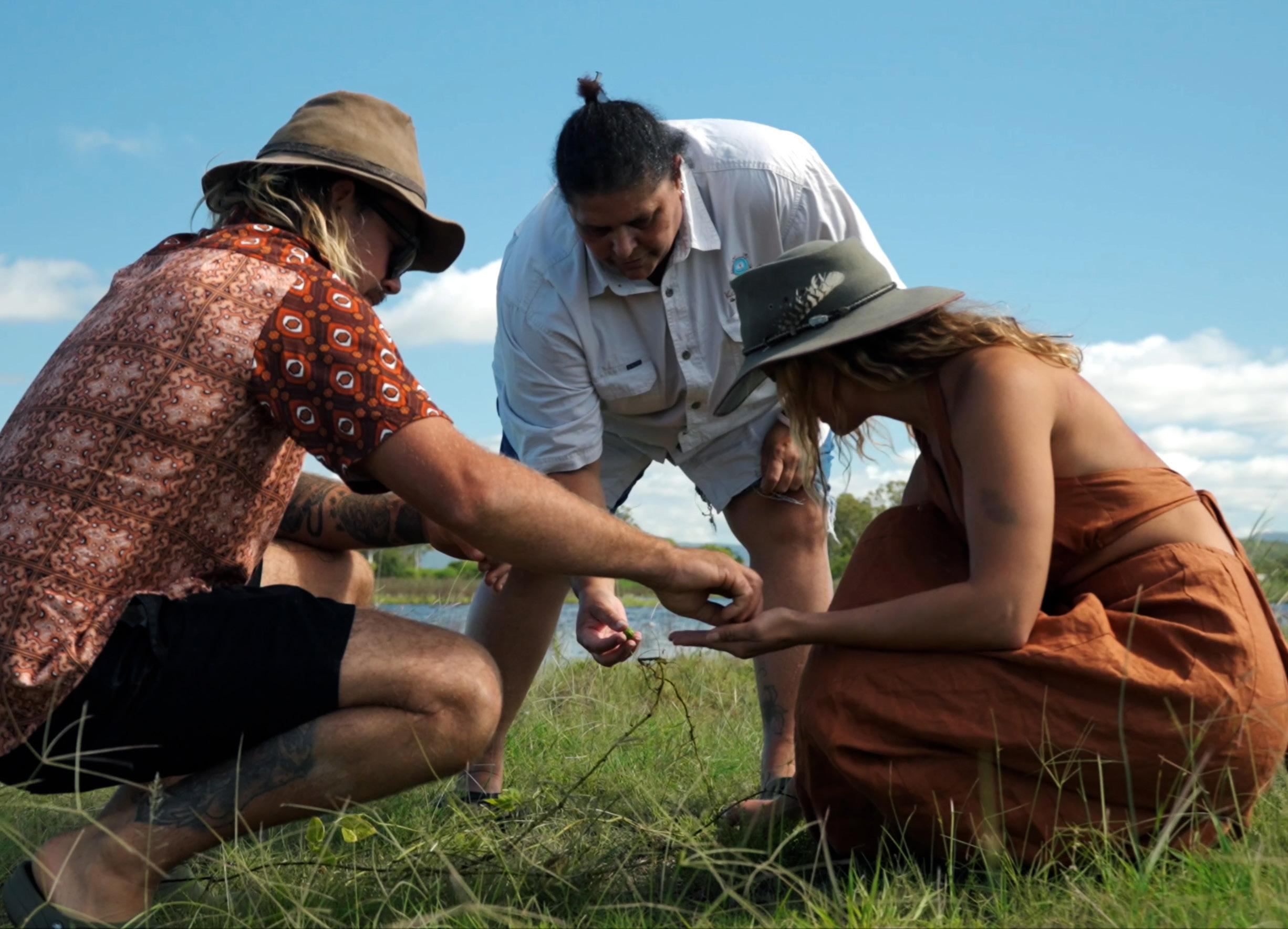
ISAAC_Community-CorporatePlan_Res No 8476_23AUGUST2023.indd 28 24/08/2023 3:33:27 PM
LIVEABILITY THROUGH DESIGN AND INFRASTRUCTURE
The quality, design and landscape of our neighbourhoods and communities has a significant impact on our daily lives.
ISAAC_Community-CorporatePlan_Res No 8476_23AUGUST2023.indd 29 24/08/2023 3:33:27 PM
WHAT WE KNOW
The quality, design and landscape of our neighbourhoods and communities has a significant impact on our daily lives.
Council intends to ensure the region’s built environment and landscape, in conjunction with its natural environment, delivers residents and visitors a healthy and liveable place, now and into the future.
Our settlement pattern is a complicated mix of coastal living, productive and rural lifestyles, low-medium density housing and high-density accommodation for working part-time residents.
Continuing pressure of mining and extractive industry expansion and contraction on our towns is an ongoing concern for the consistent provision of local and regional infrastructure and services.
Affordable housing continues to be a priority for Council as a risk precaution strategy to prevent the return of housing extremes experienced between 2008-2012.
We can expect our natural and built environments and communities to be exposed to a range of impacts from increased climate variability.
These impacts have the potential to affect the way in which we live, how we recreate and experience our natural environment and ultimately the liveability of our
region. Adaptation will focus on minimising the impacts of climate change and natural disasters within the built and natural environment. We know our open and green space network is highly valued and contributes to character, as well as relaxed and active healthy lifestyles. It provides the ‘green frame’ of our urban areas, edging our waterways, beaches and foreshores, lining our streets, and identifying our communities.
Our region is heavily reliant on private vehicle usage for access to services and employment. A continued focus on well-planned, efficient, and safe road, pedestrian and cycle transport networks will remain significant to our communities. Social infrastructure is essential for creating communities that are connected, empowered and able to adapt and respond to change. It brings people together, creating a sense of place and supports individuals, families, and communities to grow and thrive. Council will remain staunch advocates for the provision of community-building infrastructure in accordance with the changing needs of our residents.
LIVEABILITY THROUGH DESIGN AND INFRASTRUCTURE Over 22,000 permanent residents 8 water treatment plants 13,405 part-time residents 32,862 dwellings Over 10,000 worker accommodation beds Development approvals 35,955 FTE population utilising local infrastructure Road and safety project expenditure Civic precincts We maintain 217km of footpaths We maintain 4,500km of roads 6 wastewater treatment plants 30 ISAAC_Community-CorporatePlan_Res No 8476_23AUGUST2023.indd 30 24/08/2023 3:33:28 PM
EMERGING TRENDS, CHALLENGES AND OPPORTUNITIES
Global extreme temperature events are reaching unprecedented levels.
Heat-related deaths are predicted to grow by 60.5% or more across major Australian capital cities from 2020–50, but this is likely to be a conservative estimate.
Recent research suggests that official records of deaths attributed to excessive heat in Australia are underestimated by at least 50-fold. Infrastructure, such as road pavements or railways, was built using materials and methods that are designed for stable climatic conditions. Extreme high temperatures can increase the risk that road pavements will rut, or railways will expand and buckle.
Pre-emptively adapting existing and forthcoming infrastructure for
a changing climate will be critical in reducing future infrastructure risks and costs.
In 2020, less than 1% of the global land surface was classified as an extremely hot zone, but by 2070, this is predicted to increase to 19%, impacting 3.5 billion people who live in these regions.
The extreme heat is expected to encompass much of Australia.
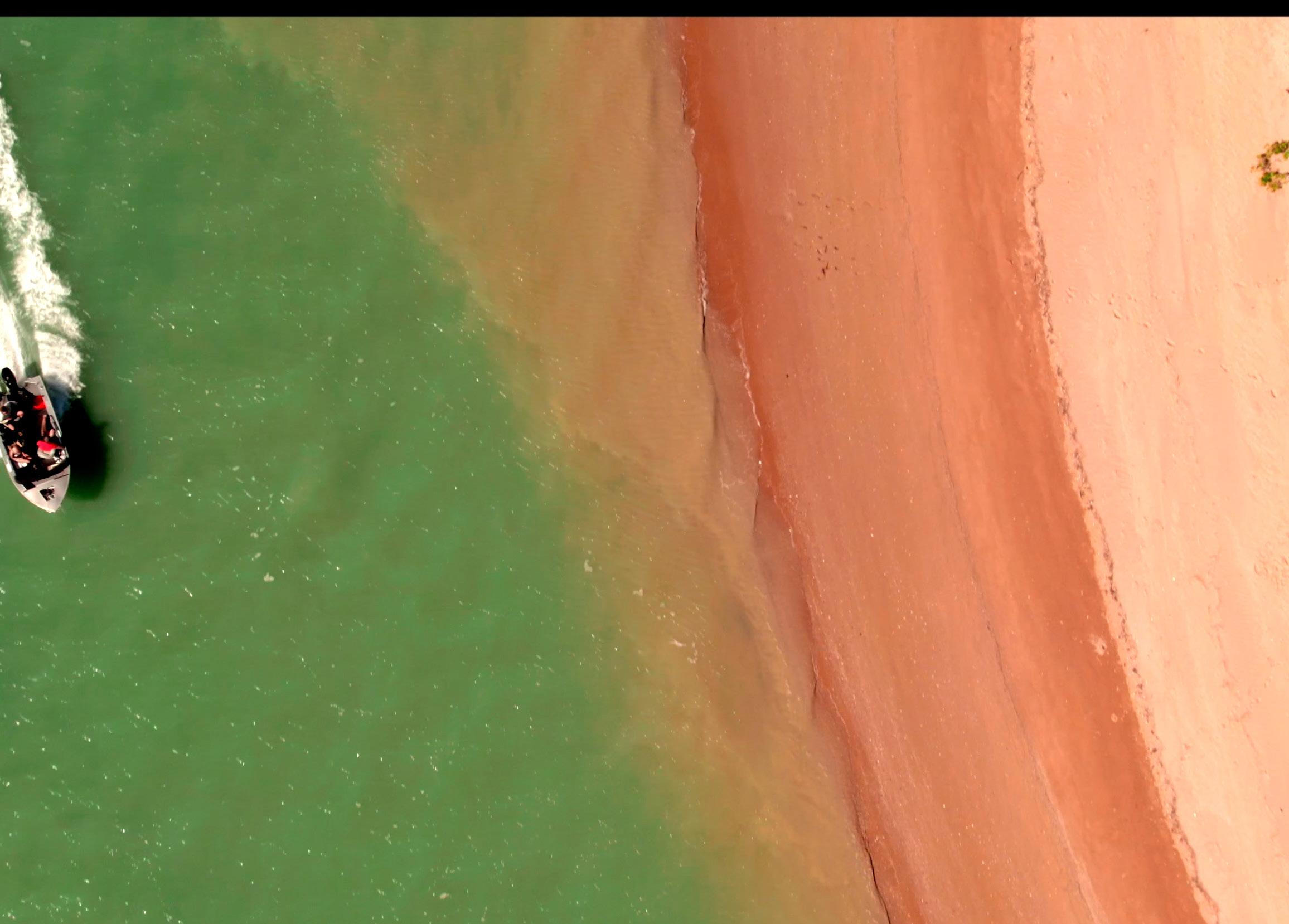
Moreover, the share of humanity living in areas that exceed a deadly temperature–humidity combination for at least 20 days per year is predicted to rise from 30% today to 74% by 2100.
About 150 million people worldwide live on land that could be vulnerable to future sea-level rises by 2050 and this could
increase to 300 million if the Antarctic becomes unstable. Climate pressures could give rise to a significant wave of climate-driven global migration in the decades leading up to the mid-century and beyond.
For Isaac, depending on the broader social, cultural and political context at the time, this migration could swing either way.
Regardless, it would significantly impact our region. Global water demand was estimated at 4,600 cubic kilometres per year in 2018 and this is projected to grow to up to 5,500–6,000 cubic kilometres by 2050.
The United Nations predicts that up to 5.7 billion people will experience water scarcity at least one month per year by 2050.
Although water demand is increasing, reductions in the availability of water resources and pollution are reducing the amount and quality of future water resources.
Annual rainfall in Australia varies due to natural conditions, but there has been a long-term shift towards lower rainfall in the southwest and above-average rainfall in the north. These rainfall patterns are expected to lead to an increase in flash flooding in northern Australia and drought conditions in southern and eastern Australia.
Scientific advances in the treatment, management and conservation of water supplies could help to alleviate future water scarcity challenges, in conjunction with sustainable development regulation.
LIVEABILITY THROUGH DESIGN
AND INFRASTRUCTURE
31 ISAAC_Community-CorporatePlan_Res No 8476_23AUGUST2023.indd 31 24/08/2023 3:33:28 PM
1-5-YEAR PRIORITIES
OUR 20-YEAR VISION
1 We will undertake strategic land use, infrastructure planning and urban design activities in a financially sustainable manner that responds to inclusive growth and enhances liveability.
6 We will incorporate climate and natural disaster mitigation in the design and operation of Council’s facilities and assets.
WHAT YOU CAN DO TO HELP
Consider sustainable building designs that suit the local climate and character of your neighbourhood.
OUR 20-YEAR VISION
Our diverse lifestyles are supported, and liveability enhanced, by a well-planned network of coastal, rural, and urban communities which unite people, neighbourhoods, natural assets, and progressive industries.
2 We will maximise the inter- and intra-connectivity of our region through a well-planned, efficient, safe and sustainable transport network.
3 We will promote the development of a diversity of affordable and sustainable living options for our communities.
7 We will provide reliable, sustainable water services, ensuring high-quality water supply and effective wastewater treatment.
8 We will implement heat management strategies in our urban areas to enhance pedestrian comfort and protect users from environmental climate impacts.
Good community citizens are houseproud and keep their yards presentable to minimise the presence of vermin, weeds and fire hazards.
As a pool owner you have a responsibility to ensure your pool does not contribute to Australia’s alarming drowning statistics.
Take active steps to eliminate mosquito breeding grounds in areas around your home.

OUR 5–10-YEAR GOAL
The unique character and liveability of our communities are enhanced through coordinated planning, placemaking, urban design, and hard and soft infrastructure.
4 We will continue to advocate for the provision of communitybuilding infrastructure and essential services which encourage community participation, nurture physical and mental health and build community resilience.
5 We will create a diverse network of reserves, parks, sportsgrounds and trails that provide green spaces to recreate and reflect, contribute to character and promote healthy lifestyles.
9 We intend to develop pedestrian infrastructure to connect residential areas safely and efficiently with commercial centres and open space.
Report neighbourhood and assetrelated matters to Council using your phone through the Snap, Send, Solve app.
LIVEABILITY THROUGH DESIGN AND
IINFRASTRUCTURE
32 ISAAC_Community-CorporatePlan_Res No 8476_23AUGUST2023.indd 32 24/08/2023 3:33:28 PM
OUR FOCUS FOR THE NEXT FIVE YEARS
Supporting strategies
Isaac Regional Council Planning Scheme
Coastal Hazard Adaptation Strategy
Recreation and Open Space Strategy
Transport Network Strategy
Infrastructure Renewal Strategy
Resilience Network Strategy
Supporting Council Services
Parks and gardens
Engineering design and projects
Infrastructure Planning
Road construction and maintenance
Planning and land development
Regulatory and building compliance
Water and wastewater
RECYCLED WATER STRATEGY
Council’s Role: Deliver.
Council has completed an Effluent Reuse Strategy to achieve ongoing compliance obligations and improve the management of Council’s recycled water across the region.
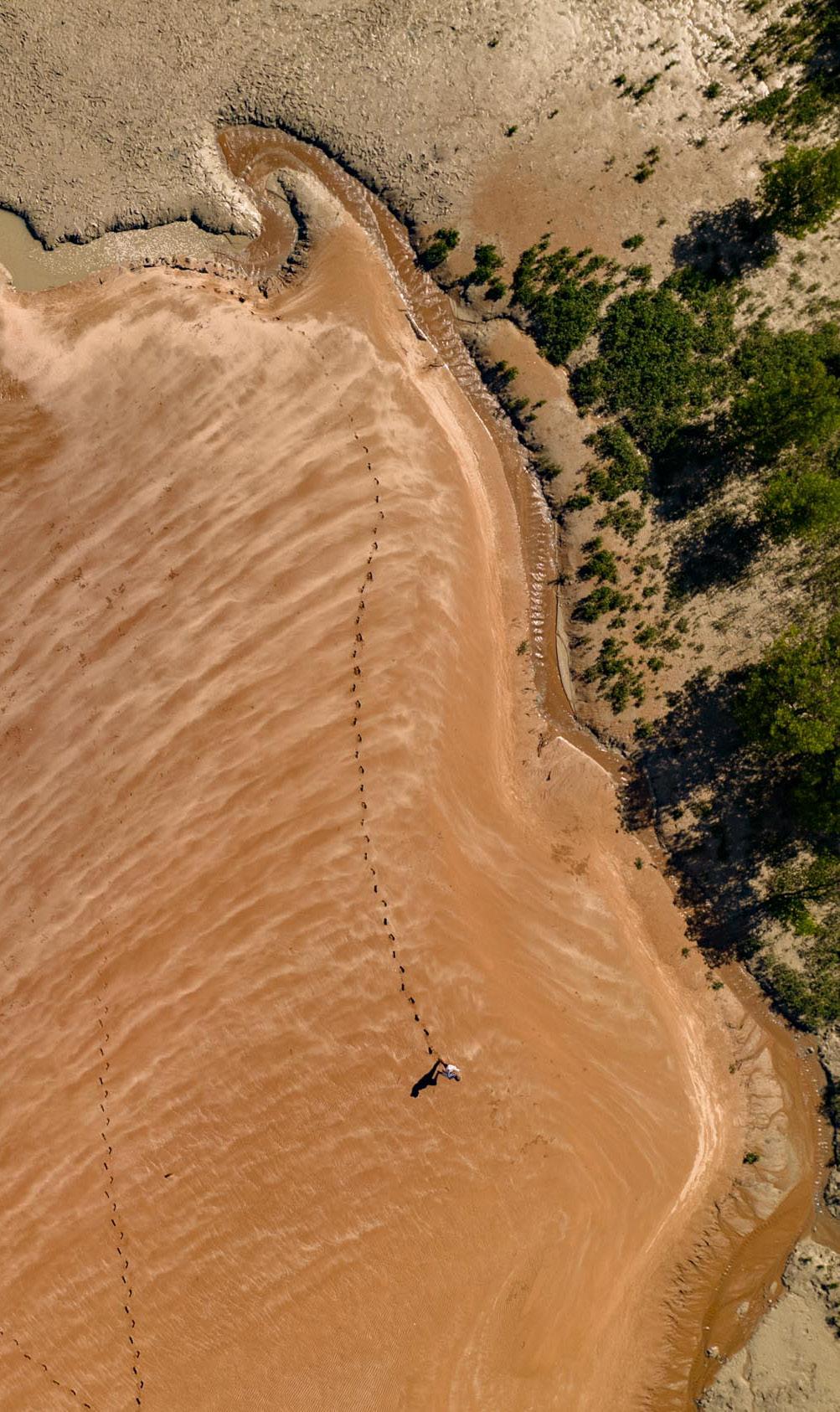
The strategy covers five townships including Glenden, Middlemount, Dysart, Clermont and Moranbah.
The strategy will be used to develop an implementation plan to reliably supply recycled water to existing parks, gardens and community facilities across the region.
The work will also identify new community assets that will benefit from future connection to the network. The strategy is a proactive step in the irrigation and greening of open spaces across the region.
CATALYST PROJECT 33 ISAAC_Community-CorporatePlan_Res No 8476_23AUGUST2023.indd 33 24/08/2023 3:33:28 PM
PHILLIPS CREEK BRIDGE UPGRADE
Council’s Role: Deliver.
Phillips Creek Bridge is an essential piece of road infrastructure between Dysart and Moranbah and provides access and connectivity to several coal mines and the wider State Road network.
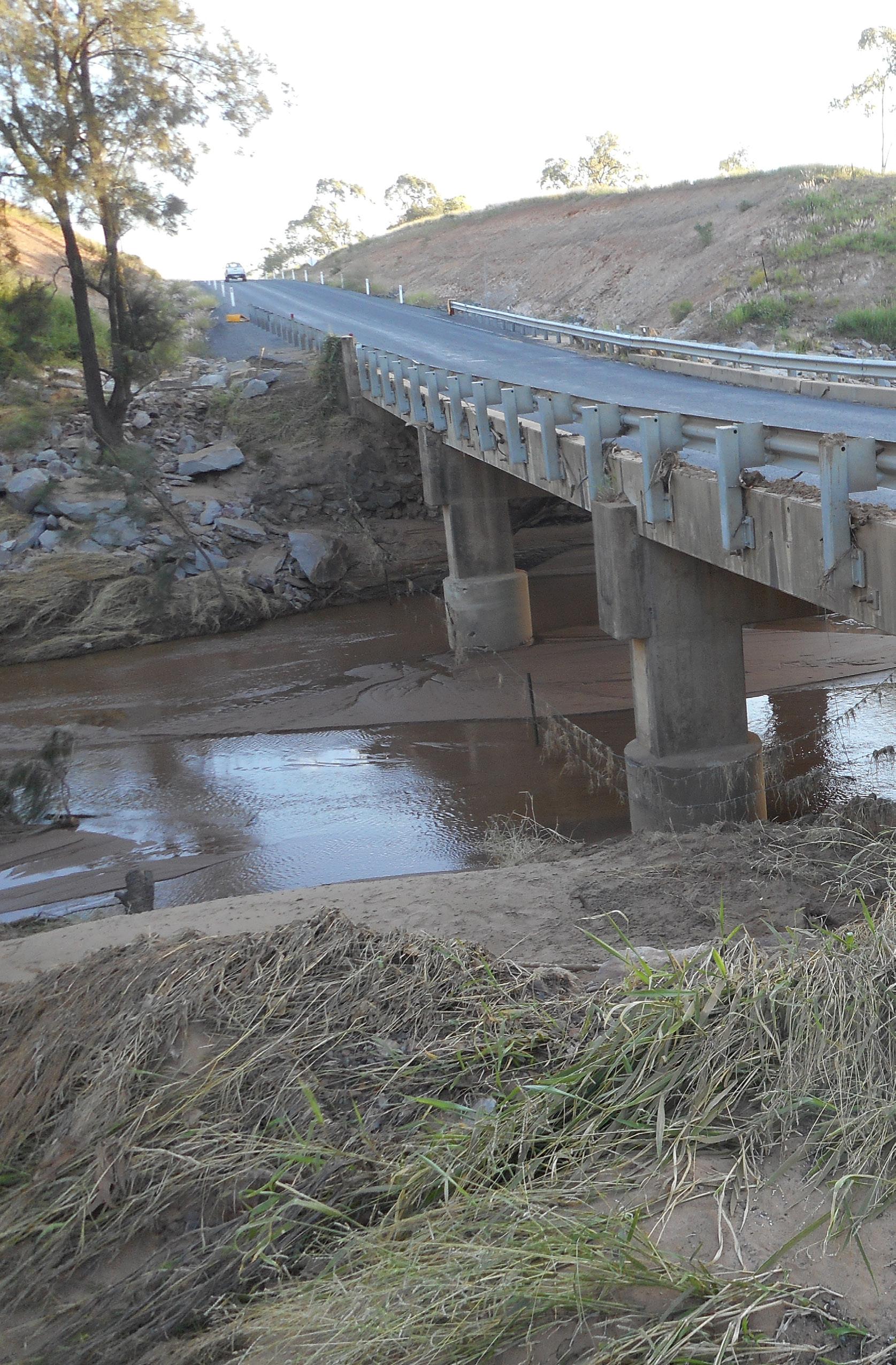
This $18 million project will replace the existing bridge with a new higher, wider, stronger bridge and is expected to support 42 jobs during its construction.
The project will also provide major safety benefits for traffic movements by large heavy vehicles and the travelling public, particularly the resource sector workforce.
Approximately 855 vehicles use the bridge daily with heavy vehicles making up nearly 25% of all use.
The approach geometry of the existing 35m concrete bridge requires a reduced 70km/h speed limit and only provides Q2 flood immunity.
The bridge is closed (on average) at least two days a year due to flooding which causes costly delays, disruption and inconvenience to business and community travel.
It is estimated the bridge costs industry and the economy more than $12 million, every day it is closed.
The Australian Government has committed $14.4 million.
An additional $3.6 million has been secured from the Queensland Government.
This includes $1.8 million from the Transport Infrastructure Development Scheme and $1.8 million from the Resource Community Infrastructure Fund.
CATALYST
PROJECT
34 ISAAC_Community-CorporatePlan_Res No 8476_23AUGUST2023.indd 34 24/08/2023 3:33:29 PM
VIBRANT NATURAL ASSETS
A vibrant healthy environment is vital to our everyday lives and contributes to our quality of life.
ISAAC_Community-CorporatePlan_Res No 8476_23AUGUST2023.indd 35 24/08/2023 3:33:29 PM
WHAT WE KNOW
A vibrant healthy environment is vital to our everyday lives and contributes to our quality of life.
Our region is a living network of landforms, catchments, wetlands, waterways, terrestrial ecosystems, coastal foreshore, and marine waters.
Preserving, improving, and appreciating our vibrant natural assets is a strong priority of Council and the broader region and is essential to our Isaac way of life.
We know our diverse ecosystems attract visitors and enhance the lifestyles and liveability of our communities. In the east, we boast 120km of Great Barrier Reef coastline, marine park, and seagrass beds. From mountains to mangroves, our coastline is a diverse array of life, from turtles and dugongs, to koalas and coral trout. We are proud to be a Reef Guardian Council, supporting a hands-on, community-based approach to caring for the Great Barrier Reef.
Off the coast, you’ll find the bush, a complex mix of remnant eucalypt woodland, acacia and gidgee
scrub fed by the headwaters of the Burdekin and Fitzroy rivers.
We are part of the Northern Brigalow Belt (part of the largest bioregion in Queensland), one of 15 national biodiversity hotspots in Australia supporting endangered species including the Northern Hairy-Nosed Wombat and Bridled Nail-Tail Wallaby.

Our natural environment is also our bountiful heritage to pass on. We know our land is resource-rich - it supports exceptional quality broadacre cropping, grazing and agricultural industries while simultaneously hosting significant Bowen and Galilee Basin coal reserves. There are significant challenges ahead of us, while we find the balance between protection and prosperity.
We are responsible and active custodians of our natural environment, with future targets and commitments aimed at driving us towards a cleaner, greener, and more sustainable region.
Climate change will continue to be a consideration in forward planning, and we will continue to implement sustainability initiatives and promote environmental stewardship.
120 km of Great Barrier Reef coastline
212,065 ha of nationally significant wetlands
4 Marine National Parks and 1 Conservation Park Zone
Over 177,500ha prime cropping land
Seagrass beds supporting turtles and dugongs
10 National Parks and 8 State Forests
21% of regional waste is diverted from landfill
75,000 transactions at 9 waste management facilities annually
30,000-32,000 tonnes of waste is landfilled yearly
8 critically endangered flora and fauna species recorded in Isaac
Up to 640,000 domestic bins collected yearly
Last wild population of the Northern Hairy-Nosed Wombat
VIBRANT NATURAL ASSETS
36 ISAAC_Community-CorporatePlan_Res No 8476_23AUGUST2023.indd 36 24/08/2023 3:33:32 PM
NATURAL ASSETS
EMERGING TRENDS, CHALLENGES AND OPPORTUNITIES
The 2023 World Economic Forum Global Risk Report continues to identify climate impacts and biodiversity loss among the top 5 global risks to the world’s economy in the next 10 years.
Biodiversity is what supports all life on Earth, yet the world’s ecosystems have declined by 47% relative to their natural baselines and 25% of living species are at risk of extinction.
Coral reefs are under greatest pressure with the worldwide area of live coral halving since 1950.
Coral reefs are the most biologically diverse of marine ecosystems and arguably the most threatened.
They are incredibly important, sustaining a wide variety of marine life and producing between 50-80% of the earth’s oxygen by plankton and photosynthesising bacteria.
They also protect our coastlines from waves and storms, sink carbon and nitrogen and help recycle nutrients and create our commercial and recreational
fishing industries. Their loss would have devastating consequences not only for marine life but for everyone.
Also at risk, is our region’s brigalow woodlands. Changing land uses has led to impacts such as soil loss and degradation, invasive species and native species extinction and decline.
There are currently eight critically endangered flora and fauna species recorded in our backyard with significantly more listed as vulnerable and threatened.
Continued biodiversity declines and reduced biodiversity-based ecological services (such as pollination, water filtration, bank stabilisation and soil moisture retention) will lead to undesirable impacts on our settlements, infrastructure, tourism, business and industry.
We recognise that our landscapes are not only diverse in ecological features, but also in condition and land use.
Different landscapes hold different values and, as such,
require different management approaches. It has traditionally been difficult to quantify the return on investment in conservation, but a recent analysis found conservation spending across countries from 1996 to 2008 reduced the rate of biodiversity loss by 29%.
Landscape rehabilitation, restoration activities and land use regime changes incorporating best practice, can improve ecosystem’s health and reverse degradation.
For example, best practice grazing management recognises the role of biodiversity in land condition and soil health, and ecologically sensitive management changes improve long-term sustainability whilst providing significant benefits to water quality and corridors and refugia for our wildlife.
Our waste is also a growing concern.
Almost 85% of plastics in Australia were sent to landfill in 2019, and if nothing changes, RMIT University estimates that Australia’s landfill space will reach capacity by 2025.
In Isaac, approximately 70% of our waste is classified as commercial and industrial. In 2017, China announced bans on solid waste imports, which prompted many countries to reassess their waste management strategies.
The Australian Government has banned exports of waste plastics, paper, glass and tyres and set a target to reduce waste to landfill by 30% by 2030. We’re actively working to improve our resource recovery, recycling, and landfill diversion through services and infrastructure and regional partnerships to increase our landfill waste diversion rates from 21% to 25%.
Advanced recycling technologies can convert end-of-life plastics into their original building blocks to create other valuable commodities and could be used to improve the recovery of plastics in Australia.
Australia has the necessary infrastructure; manufacturing skills and supply chains needed to develop advanced recycling and leverage these opportunities as well as apply circular economy principles to our industrial waste.
VIBRANT NATURAL ASSETS
VIBRANT
37 ISAAC_Community-CorporatePlan_Res No 8476_23AUGUST2023.indd 37 24/08/2023 3:33:33 PM
OUR 20-YEAR VISION
1-5-YEAR PRIORITIES
Our vibrant natural assets are healthy, protected, and appreciated; enriching our collective identity, individual lifestyles, overall wellbeing, and prosperity.
1 We will promote and encourage the protection, restoration, and improvement of our ecosystems through environmental stewardship, community incentives and education programs.
2 We will responsibly manage our invasive plants and animals, human and wildlife conflicts and improve our environmental compliance.
3 We will aim to improve resource recovery, recycling, and landfill diversion through improvements to our collection service and waste infrastructure and through regional partnerships.
OUR 5–10-YEAR GOAL
The region’s vibrant natural assets are preserved and enhanced in partnership with our communities, local industries, and government.
4 We will proactively respond to biodiversity loss, climate change and natural hazard risks.

5 We will partner and collaborate with our First Peoples, government agencies, industry, community, and private landholders to provide an integrated approach to the conservation, protection and enhancement of our vibrant natural assets and biodiversity.
6 We will provide leadership, education programs and support for our community to transition to a low carbon, circular and sustainable economy.
7 We will understand the economic value of our environment and biodiversity as we advocate for and improve the quality of our vibrant natural assets.
8 We will ensure healthy coastal ecosystems through coastal planning, management, monitoring and delivery.
9 We will support suitable physical infrastructure, such as walking tracks and interpretive education signage to promote and educate the community and visitors about our natural assets.
WHAT YOU CAN DO TO HELP
Be a responsible pet owner. Desex your pet, register and microchip them, and remember to vaccinate against disease.
Don’t dump illegally. Responsibly dispose of your waste.
Recycle right - understand what items can be recycled through the services provided by us and others.
Participate in conservation, restoration, revegetation and habitat enhancement opportunities.
Learn about and explore the many natural experiences on offer across the region.
Choose more sustainable goods including local products, when making purchases and maximise the value of the resources you use by repurposing wherever possible.
VIBRANT NATURAL ASSETS
38 ISAAC_Community-CorporatePlan_Res No 8476_23AUGUST2023.indd 38 24/08/2023 3:33:33 PM
OUR FOCUS FOR THE NEXT FIVE YEARS
Supporting strategies
Blue-Green Algae in Recreational Water Bodies Monitoring and Response Strategy
Isaac Waste Management Strategy
Environmental Management System
Flying Fox Management Strategy
Biosecurity Plan
Supporting Council Services
Community education
Biosecurity pest management
Waste management
Environmental services and compliance
Environmental health

Local Laws, animal management and stock routes
REEF GUARDIAN COUNCIL ACTION PLAN
Council’s Role: Deliver. Facilitate. Partner. Educate. Regulate.
We are proud to be a Reef Guardian Council actively involved in protecting the Great Barrier Reef and its 42-millionhectare catchment. This collaborative stewardship arrangement between local governments and the Great Barrier Reef Marine Park Authority comprises of 19 member councils covering an expansive area of 300,000 square kilometres.
Our Reef Guardian Council Action Plan concentrates on addressing key threats to the reef, including climate change, coastal development, land-based run off, direct use, and reef heritage and social values.
It reinforces Council’s dedication to environmental conservation and preserving the region’s unique marine ecosystem, as well as records the diversity of Council’s actions and projects that aim to improve the long-term outlook for the reef.
The plan is a powerful tool for the Council to share its reef management actions with the local community - and the rest of the world. The action plan is reviewed and updated regularly, and milestone reports are produced to highlight the continuous improvements occurring across a range of Council activities.
ISAAC REGIONAL COUNCIL’S WASTE MANAGEMENT STRATEGY
Council’s Role: Deliver.
As a society, our concept of waste is changing. It’s shifting from ‘waste as rubbish to discard’, to a valuable resource to facilitate innovation, re-use, economic growth and employment.
Council’s Waste Management Strategy 2020-2025 sets a clear path for the management of solid waste in the Isaac region towards 2029.
The strategy addresses future waste infrastructure, improved waste diversion and resource recovery, operational efficiency and compliance and waste education.
The strategy also considers the variability in our population and local economy to deliver essential waste management services in a financially responsible manner.
CATALYST PROJECT
39 ISAAC_Community-CorporatePlan_Res No 8476_23AUGUST2023.indd 39 24/08/2023 3:33:34 PM

ISAAC_Community-CorporatePlan_Res No 8476_23AUGUST2023.indd 40 24/08/2023 3:33:34 PM
GOVERNANCE FOR ACCOUNTABILITY
Our community deserves an effective, transparent, and accountable local government.
ISAAC_Community-CorporatePlan_Res No 8476_23AUGUST2023.indd 41 24/08/2023 3:33:34 PM
WHAT WE KNOW
Our community deserves an effective, transparent, and accountable local government.
Like all Australian local governments, we are responding to dynamic challenges, increased demands on our assets, rising complexities and costs of delivery, changing community expectations and an intricate statutory environment.
Our governance framework is the vehicle which enables us to respond effectively and efficiently to opportunity and risk.
It comprises of a large suite of processes, systems, roles, and relationships by which decisions are made and held to account. It is this framework that will drive the daily excellence of our services.
Our reputation and trust amongst the community is shaped by our people, behaviours, shared values, decisions, and actions.
We will continue to proactively engage our people to epitomise our organisational values and lead proudly by example.
We
Over
Ongoing safety, security, health and wellbeing for our employees and contractors also remains a priority.
We must earn your confidence by doing what is in the best interests of our communities with demonstrable accountability, transparency, and financial responsibility.
We
Sound resource management strengthens how we provide value to our community in the delivery of Council’s strategic objectives and the daily services our communities need.
Long-term financial sustainability is critical to enable the organisation
to deliver balanced community, environment, and economic outcomes for the region.
Risk management is essential to corporate planning and governance as it helps us manage risks and opportunities that may impact the delivery of key projects and services.
We are committed to embedding a proactive risk culture across the organisation.
Our risk management program will continue to work towards a risk maturity that ensures sound risk management practices are integrated into strategic and operational planning, budgeting, and project prioritisation processes.
Keeping our community informed is more important than ever before. Evolving operating environments, technology and changing expectations means that change is happening at an unprecedented rate and is not always predictable.
New and contemporary approaches to communication will be explored to provide clear and timely messaging to our community on the issues that matter most.
GOVERNANCE
ACCOUNTABILITY
FOR
Community trust rating Council manages $1.566 billion of assets annually (gross value EOFY 2022)
Generous local procurement policy
employ over 400 full-time equivalent staff
average 40,000 annual front-of-house customer service interactions split between phone calls and walk-ins
$40m committed in capital works projects
42 ISAAC_Community-CorporatePlan_Res No 8476_23AUGUST2023.indd 42 24/08/2023 3:33:37 PM
WHAT WE KNOW
As service demands increase, budgets rarely do, and councils are not immune to the economic impacts brought on by COVID-19.
As financial sustainability becomes an urgent priority, the need for agile, efficient service delivery, and robust data and analytics to support sound decision-making around models of service, becomes increasingly important.
A vigorous data strategy can also help with future asset planning and management, and alignment to long-term financial goals.
Customer service expectations are higher than they’ve ever been and we need to serve our customers in new ways.
We now live in an on-demand society, and communities expect Council services to be always-on and available on demand.
Communities now expect selfservice options, quick responses, and digital services that are modern, efficient and effective.
Technology has also become a critical catalyst for change, providing solutions to many of our challenges as well as creating new opportunities for change.
The threat of cybercrime, cyberterrorism and cyberwarfare continues to escalate.
There was a 13% increase in the number of cybercrime reports made to the Australian Cyber Security Centre in 2020–21 compared to the previous year, with one reported cyberattack every 8 minutes.
Cybercrime is estimated to cost the Australian economy $29 billion annually and these costs are expected to rise as cyberattacks increase in their frequency, scale and sophistication.
Australia’s vulnerability to attacks has increased during the COVID-19 pandemic as more people work, study and access services online.
Isaac Regional Council itself has not been immune to these threats. It is an imperative for governments, organisations and individuals to adopt good cybersecurity practices and systems to protect themselves against future cyber threats.
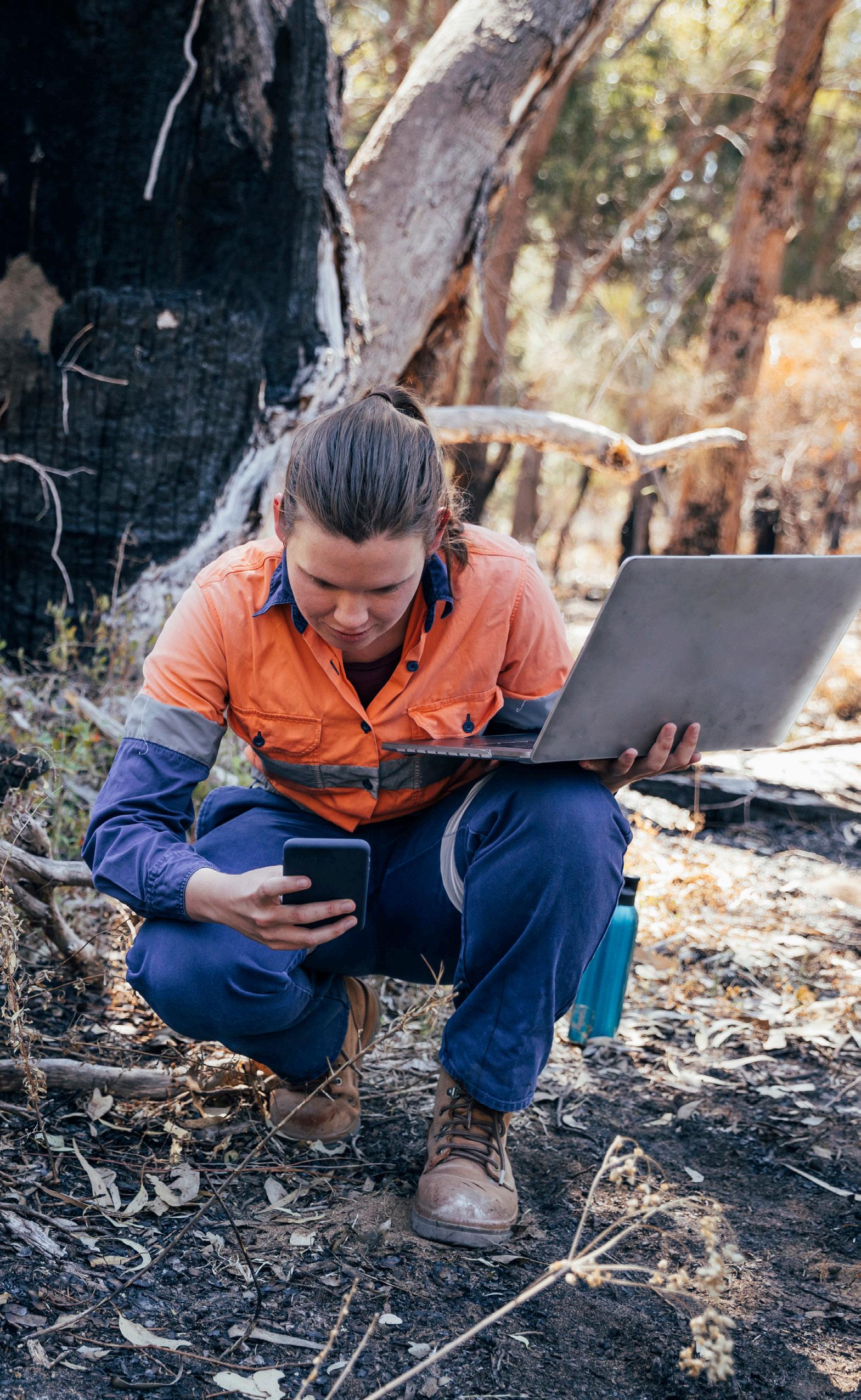
GOVERNANCE
ACCOUNTABILITY
FOR
43 ISAAC_Community-CorporatePlan_Res No 8476_23AUGUST2023.indd 43 24/08/2023 3:33:38 PM
OUR 20-YEAR VISION
We are an accountable, transparent, and fiscally responsible local government, who consistently meets its legislative requirements; is recognised as a leader in contemporary governance practices; and who inspires the confidence of our communities.
1-5-YEAR PRIORITIES
1 We will revise our governance framework to align with ESG principles and so it is responsive enough to support the changing needs of Council and our community.
2 We responsibly manage our finances and assets in a way that continues to improve our organisation’s long-term sustainability.
3 We adopt best-practice decision-making that is transparent, accountable and represents the current and future interest of the region and its communities.
6 We will investigate new and contemporary approaches in communication to keep our staff and community wellinformed about our activities and performance in a regular, relevant, and consistent manner.
7 We will integrate and streamline strategic planning approaches across Council.
8 We carefully understand our organisation’s risk exposure and have robust processes in place to manage those risks.
WHAT YOU CAN DO TO HELP
Keep us accountable by asking questions, keep informed by reading your community newsletters and providing us with constructive feedback on what we can do better.
OUR 5–10-YEAR GOAL
Our organisation will embrace and embody a contemporary governance framework aligned with environmental, social and governance (ESG) principles to drive daily excellence, accountability, transparency, fiscal responsibility, and integrity.
4 Our planned capital and operational projects are delivered with agility and in line with business and community needs.
5 We lead by example and epitomise our organisational values.
9 We provide for the safety, security, health and wellbeing for our employees and contractors.
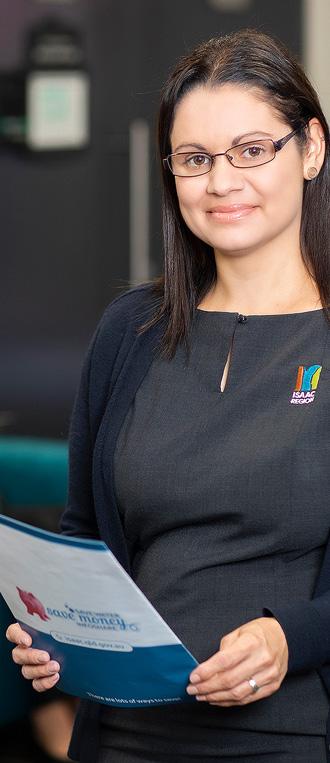
10 Revise and improve services through innovation, business, and technology advancement.
Actively engage with us through our online engagement platform Speak Up Isaac to share your ideas and provide feedback.
Provide timely and constructive feedback on services, facilities, infrastructure and maintenance problems we can fix.
Be respectful when interacting with our people - we are here to help you.
Use our online services where available to reduce paper and increase efficiency.
GOVERNANCE FOR ACCOUNTABILITY
44 ISAAC_Community-CorporatePlan_Res No 8476_23AUGUST2023.indd 44 24/08/2023 3:33:38 PM
OUR FOCUS FOR THE NEXT FIVE YEARS
Supporting strategies
Strategic Asset Management Plan
Long-term Financial Forecast
Annual Council Budget
Fraud and Corruption Control Plan
Enterprise Risk Management
Framework
Audit and Risk Committee
Customer Experience Strategy
Attraction and Retention Strategy
People and Performance Strategy
Supporting Council Services

Governance, corporate and financial services
Contracts, procurement and legal services
People, capability, culture and organisational development
Risk management, internal audit, safety and resilience
ICT, information management and systems
Strategic, corporate and business continuity planning
Council’s Role: Deliver. Facilitate. Partner.
Digital technologies and online platforms have transformed how we live, work, and interact with each other.
Council is currently impeded by technological constraints which are hindering our ability to provide efficient services to our communities.
As a local government, we recognise the importance of digital transformation in enhancing the way we operate, provide services, and engage with residents.

A digital strategy is crucial for our Council to adapt to the rapidly changing technological landscape.
Its creation and implementation will help streamline ways of operating; enhance transparency and accountability; enable effective internal and external communication; and improve overall efficiency and costeffectiveness of operations.
CATALYST PROJECT
45 ISAAC_Community-CorporatePlan_Res No 8476_23AUGUST2023.indd 45 24/08/2023 3:33:38 PM
ISAAC REGIONAL COUNCIL’S DIGITAL STRATEGY
1 The majority of residents agree Council is managing the region well.
8 Reduced waste generation and increased resource recovery.
2 The majority of customers report positive experiences in dealing with Council.
9 Council’s preparedness and responsiveness to natural disasters and hazards.
3 The majority of staff feel valued, appreciated and report good levels of job satisfaction.
4 Improved effectiveness of advocacy activities in attracting investment into key infrastructure and services.
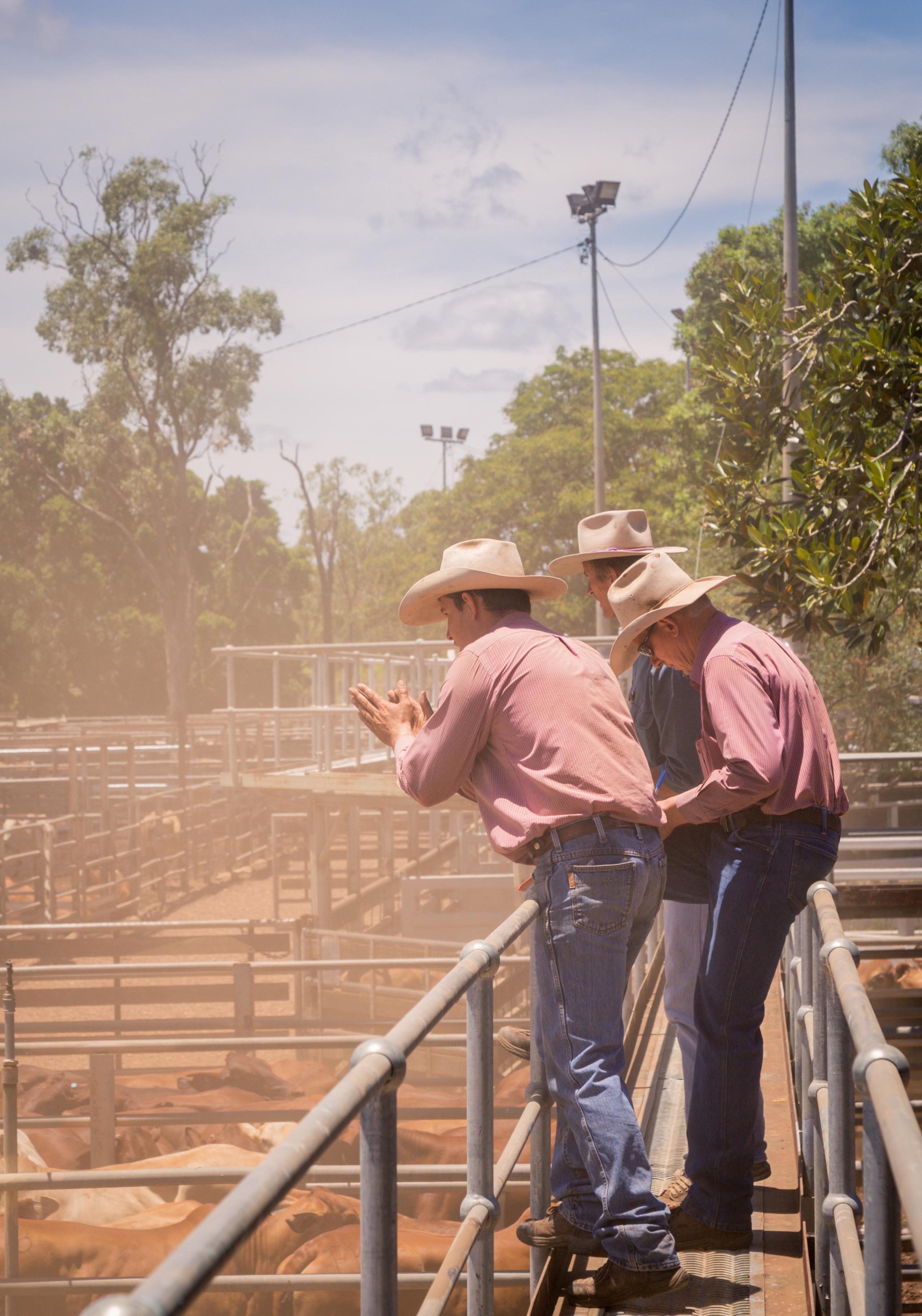
5 Improved community satisfaction with their ability to access opportunities to have a say and engage on Council matters.
6 Improved usage and accessibility of Council’s services and facilities.
7 The diversity of regional business activity.
10 Council’s performance in relation to governance, risk management and compliance metrics.
11 Sound financial capacity to meet our long-term commitments.
OUR
INDICATORS
KEY PERFORMANCE
ISAAC_Community-CorporatePlan_Res No 8476_23AUGUST2023.indd 46 24/08/2023 3:33:39 PM
OUR MEASURES OF SUCCESS WILL BE:
HOW WAS THIS PLAN INFORMED?
INFORMATION GATHERING AND INTERNAL WORKSHOPPING
Council conducts many forms of community engagement, as well as other projects and initiatives which create important opportunities for dialogue.
Council staff and elected representatives also sit on numerous committees, boards, and representative groups.
This allows Council to share in meaningful conversations and understand community and industry issues and trends.
Rather than starting with a large blank canvas or survey to start the draft Community-Corporate Plan, Councillors and staff consolidated their knowledge of both Council and community strengths, weaknesses, opportunities, and threats and categorised these into six broad themes.
REFERENCES
COVER
Queensland-biodiversity-conservation-strategy.pdf
Achieving digital transformation in local councils - KPMG Australia https://technologyonecorp.com/resources/articles/macrotrends-driving-transformation-in-local-government
These themes were then extensively reviewed and tested at a range of internal workshops between staff and elected representatives.
Priorities were roughly identified and tested.
DESKTOP REVIEW
A desktop review was then conducted which saw the collation and analysis of the following against the pre-determined themes:
- Existing Council internal strategies, frameworks, policies and programs.
- Internal statistical collation of Council’s services.
- External statistical collation on the region including demographics, economic and environmental figures.
- State and federal governments and their agencies’ strategic documents which directly impact local government.
- Local Government Act 2009.
- Community and corporate plans of other local governments across Queensland.

- CSIRO’s leading document
Our Future World on global megatrends.
- Isaac Youth Unmet Needs Snapshot.
This desktop review enabled the vision, goals, and priorities of each theme to be better defined and more relevant to the working environment.
FACE-TO-FACE COMMUNITY ENGAGEMENT AND DRAFT COMMUNITY-CORPORATE PLAN SURVEY
These were conducted concurrently with one another. While the information gathering, internal workshops and desktop reviews focussed on collecting and defining what we as an organisation knew, the face-toface community engagement and draft Community-Corporate Plan Survey were designed to groundtruth the vision, goals and priorities and provide both qualitative and quantitative data behind this.
FIRST NATIONS YARNS
REFERENCES
Informal yarns were held with the communities of the region’s seven First Peoples regarding the plan. The intention of the yarns were to ensure we continued to build and grow meaningful relationships and contact with our First Peoples. The plan was culturally informed and reflected our First People’s priorities for the future of the region, their communities, country, land, and waterways.
Naughtin C*, Hajkowicz S*# Schleiger E, Bratanova A, Cameron A, Zamin T, Dutta A (2022) Our Future World: Global megatrends impacting the way we live over coming decades. Brisbane, Australia: CSIRO.
Queensland Government. Queensland Energy and Jobs Plan. 2022. Queensland Energy and Jobs Plan (epw.qld.gov.au)
Why The Building Sector? – Architecture 2030
STORY: Revealed - the biggest barriers to widescale green steel uptake - Sustainability - Digital Nation (digitalnationaus.com.au)
ISAAC_Community-CorporatePlan_Res No 8476_23AUGUST2023.indd 47 24/08/2023 3:33:40 PM
VISIT US IN PERSON
Clermont Office
21 Daintree Street CLERMONT QLD 4721
Dysart Office 18 Shannon Crescent DYSART QLD 4745
Glenden Office
Town Shopping Centre 17-27 Perry Drive GLENDEN QLD 4743
Middlemount Office 11 Carter Place MIDDLEMOUNT QLD 4746
Moranbah Office
Grosvenor Complex
1 Batchelor Parade MORANBAH QLD 4744
Nebo Office 14 Reynolds Street NEBO QLD 4742
St Lawrence Office 36 Macartney Street ST LAWRENCE QLD 4707
OTHER WAYS TO CONTACT US
1300 ISAACS (1300 47 22 27)
isaac.qld.gov.au
PO Box 97 MORANBAH Q 4744
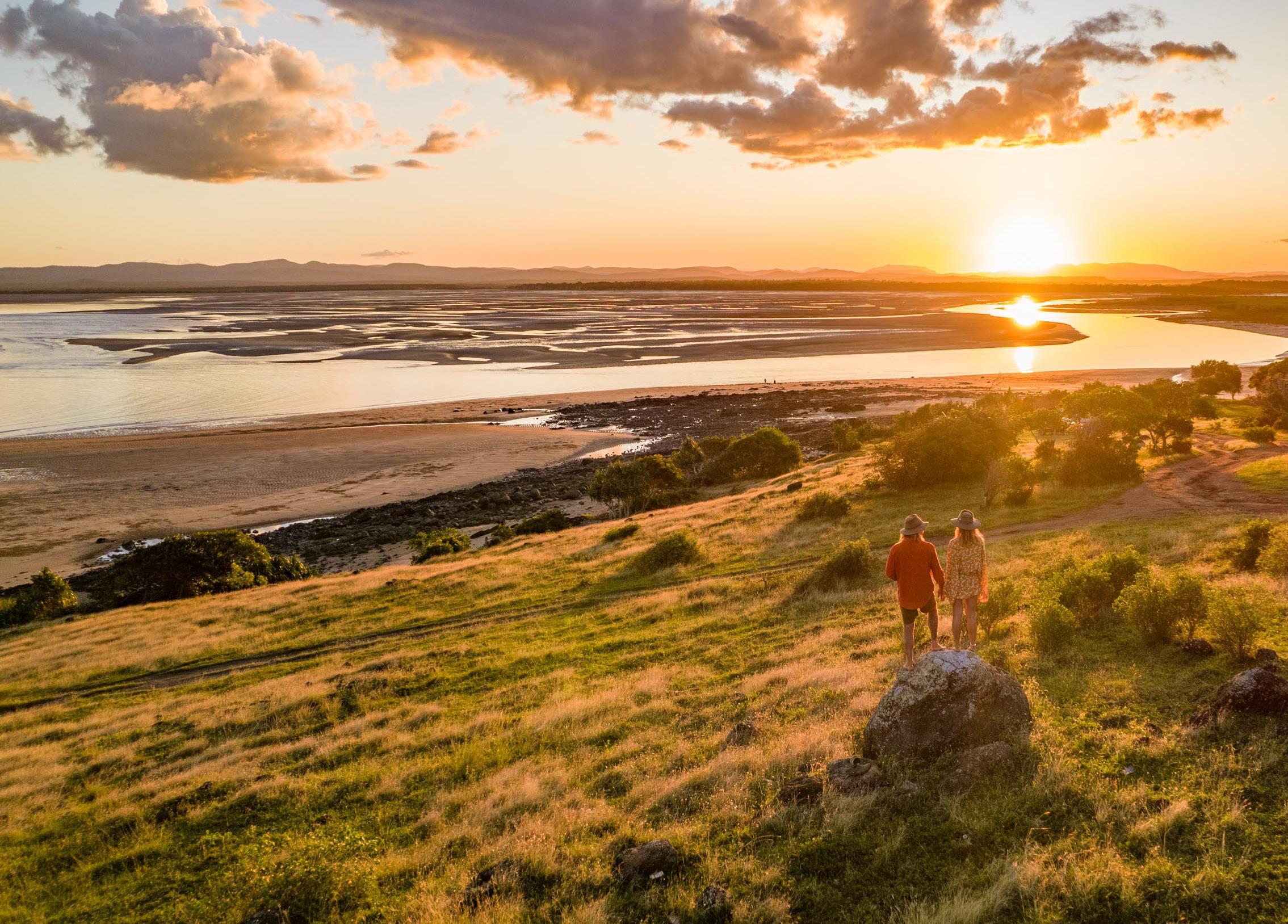
FOLLOW US ON SOCIAL MEDIA
isaacregionalcouncil
isaacregionalcouncil
isaacrcouncil
Search isaac-regional-council in

ISAAC_Community-CorporatePlan_Res No 8476_23AUGUST2023.indd 48 24/08/2023 3:33:40 PM















































